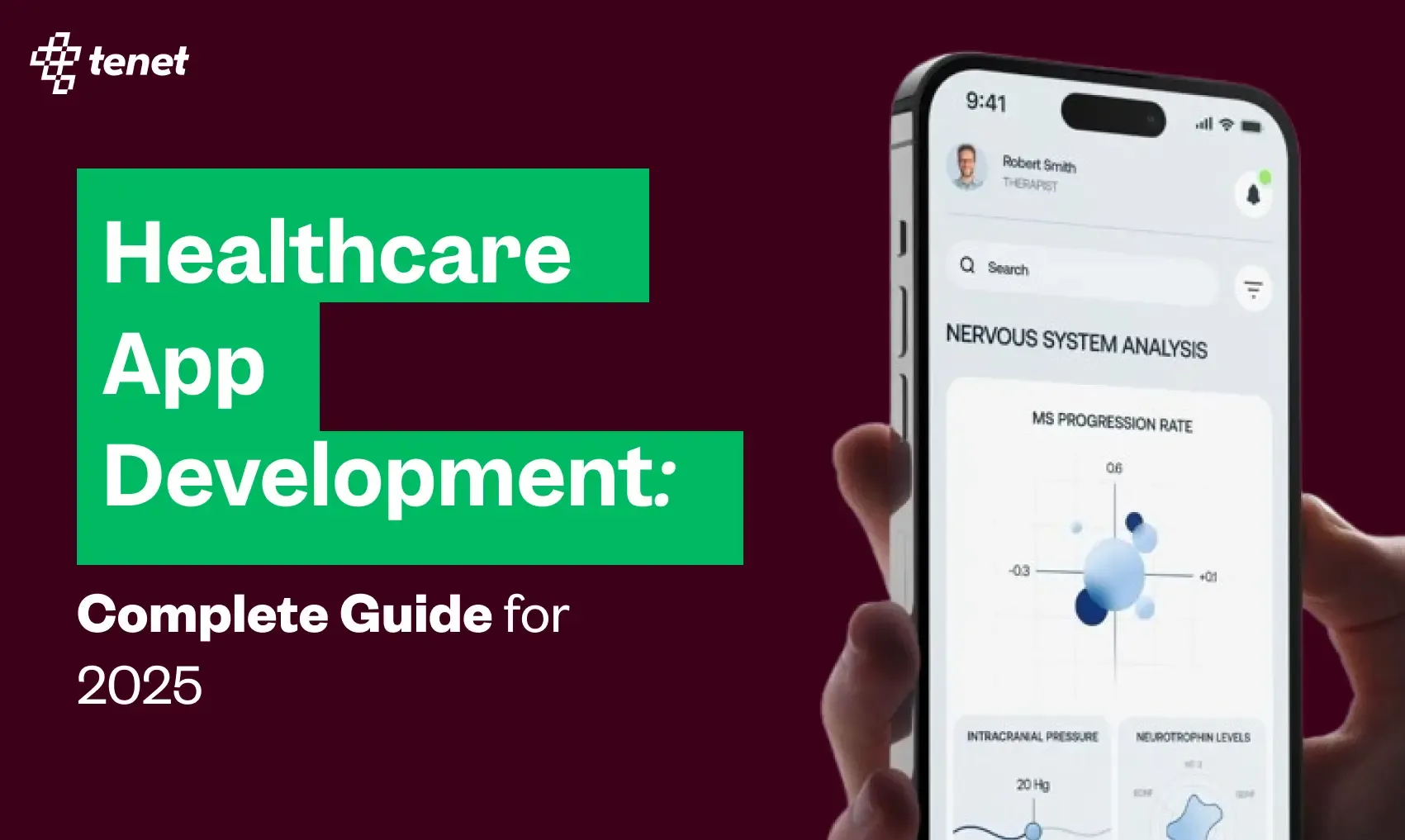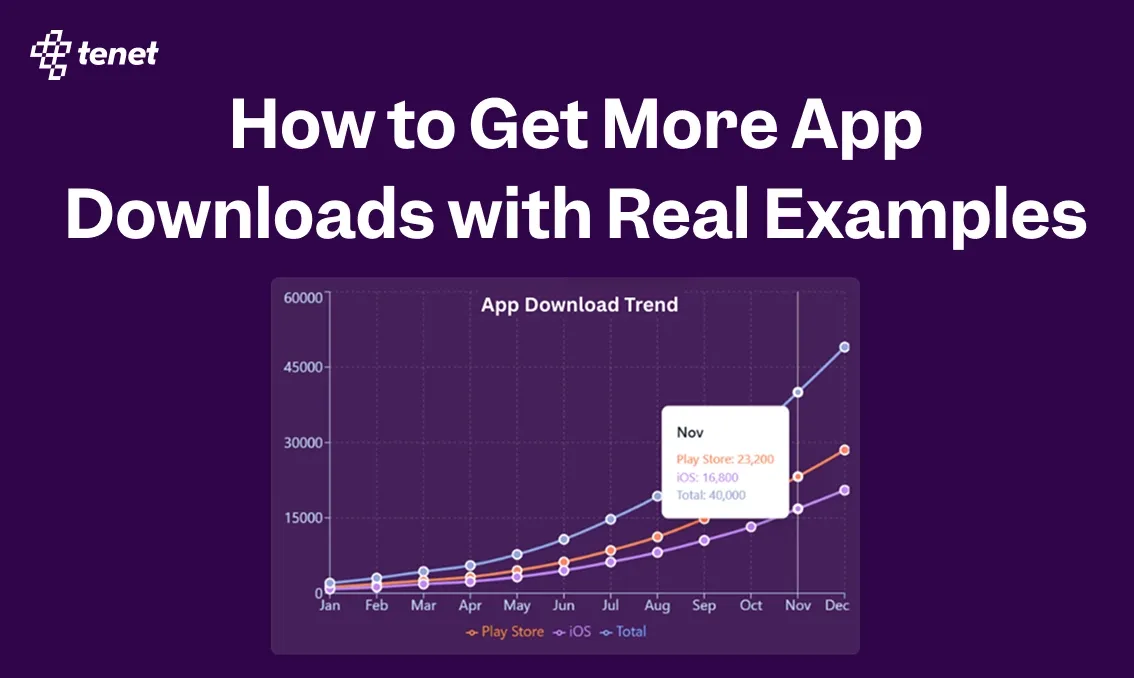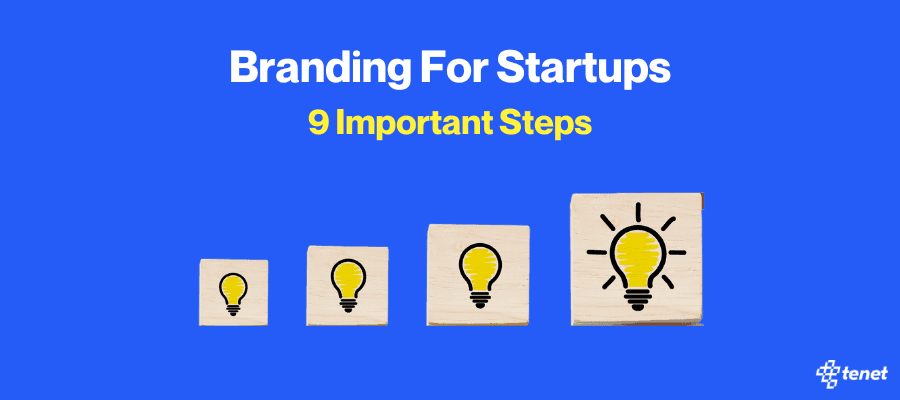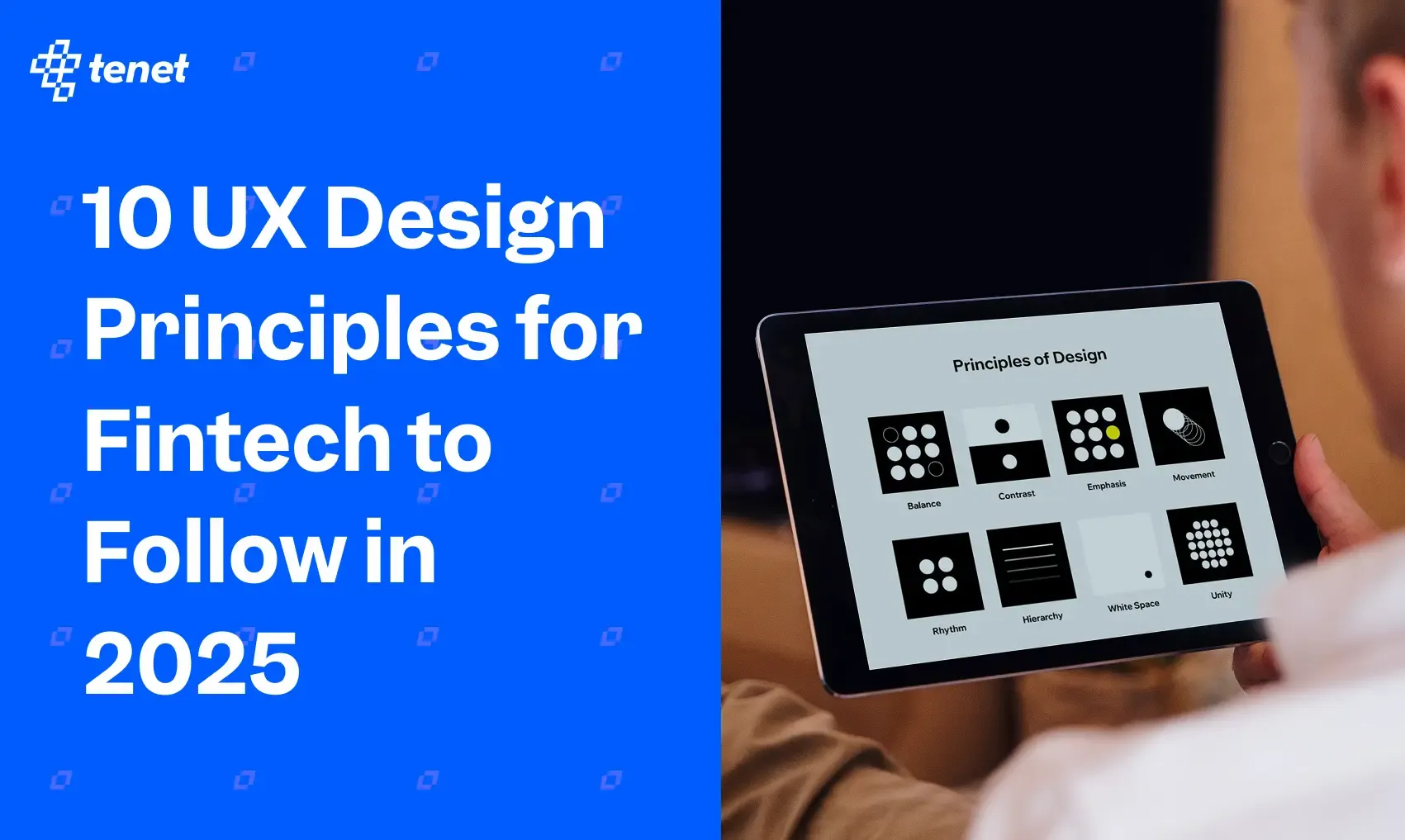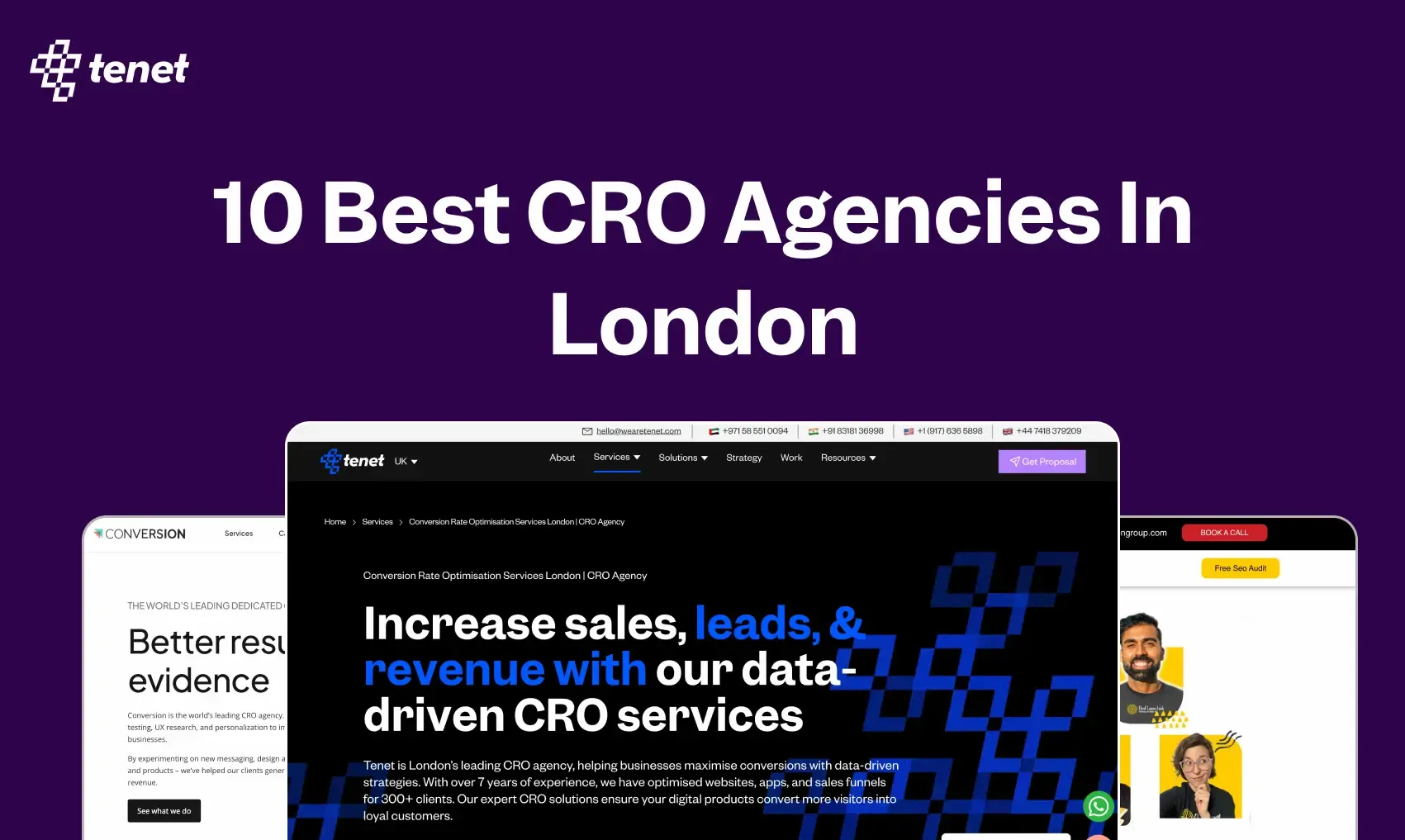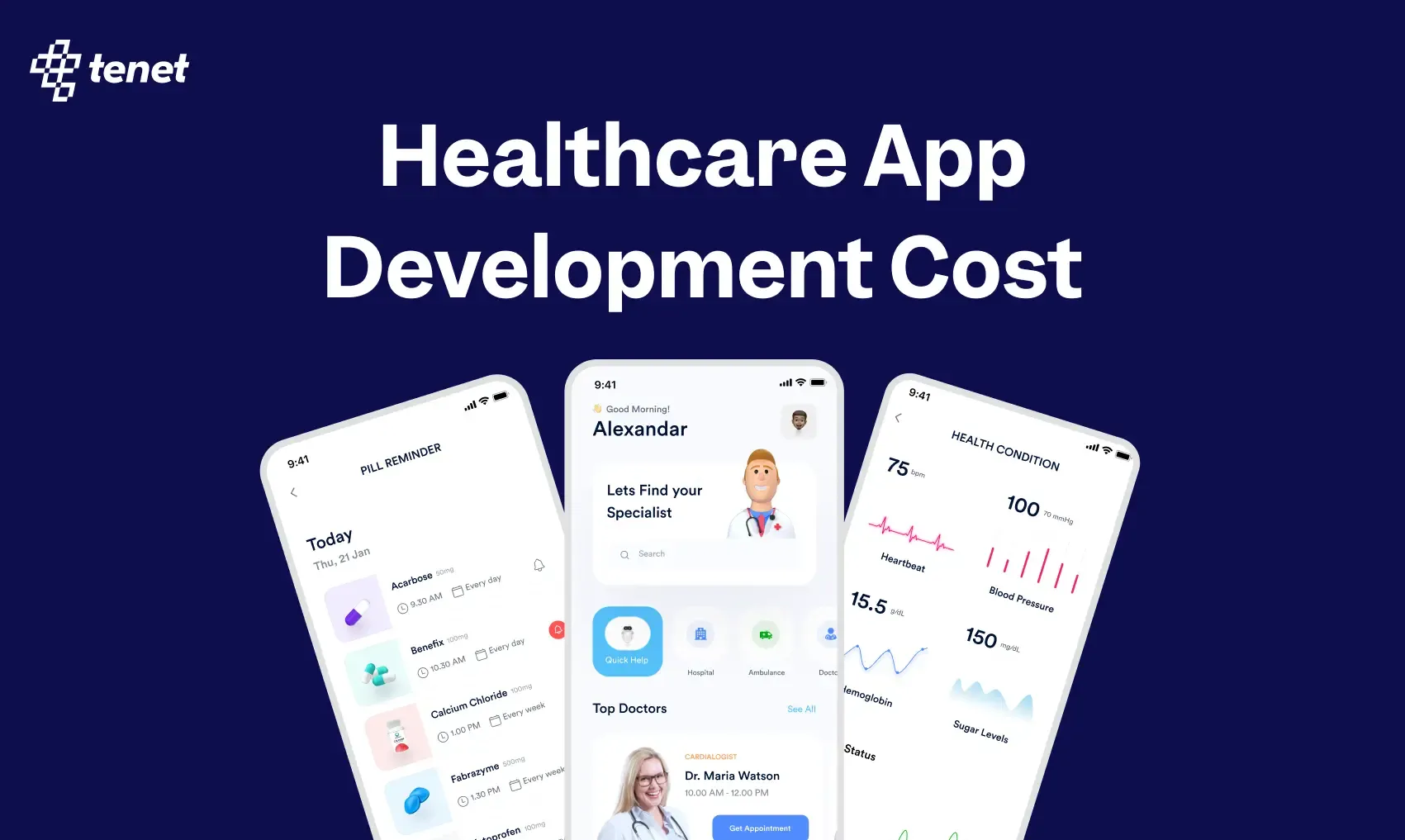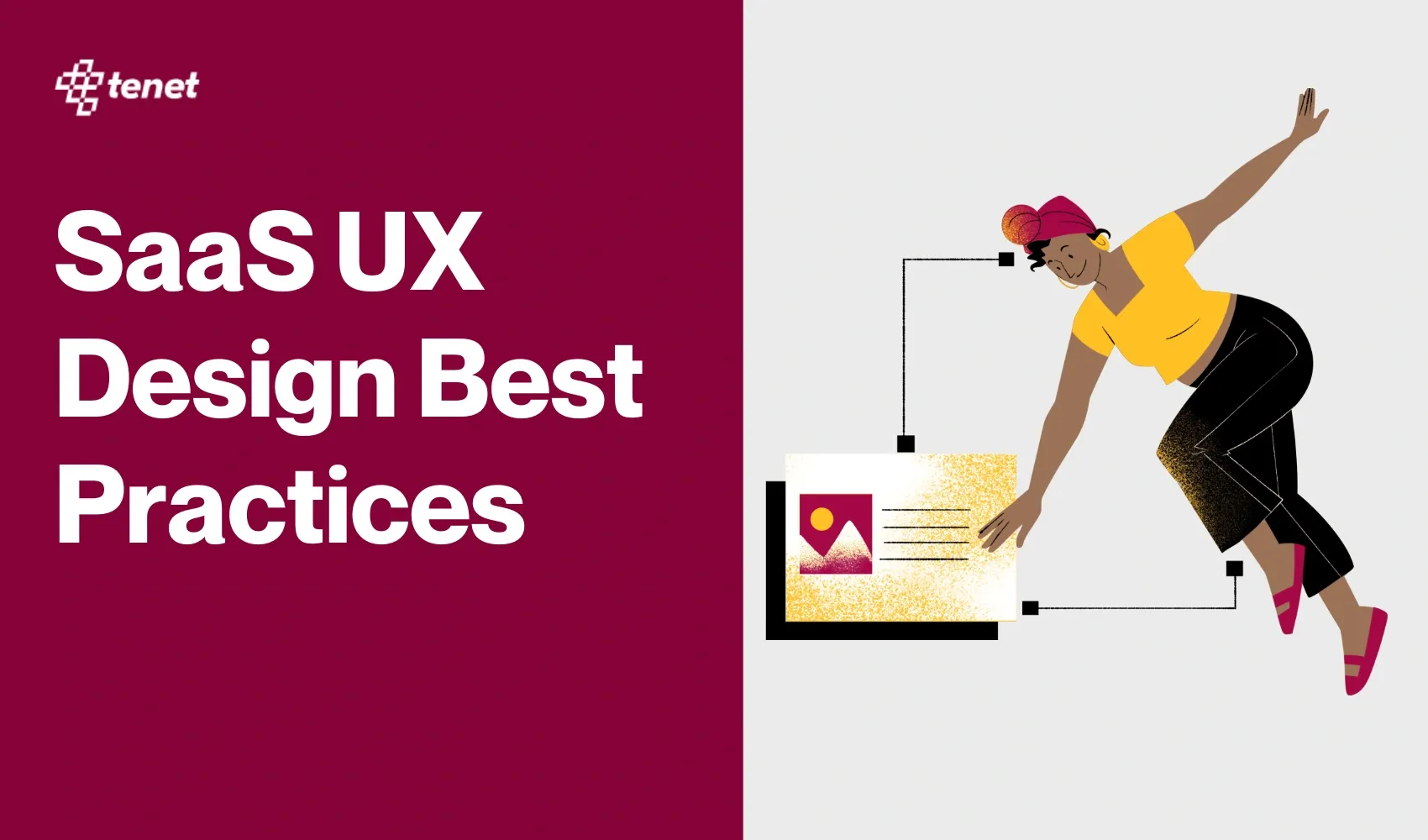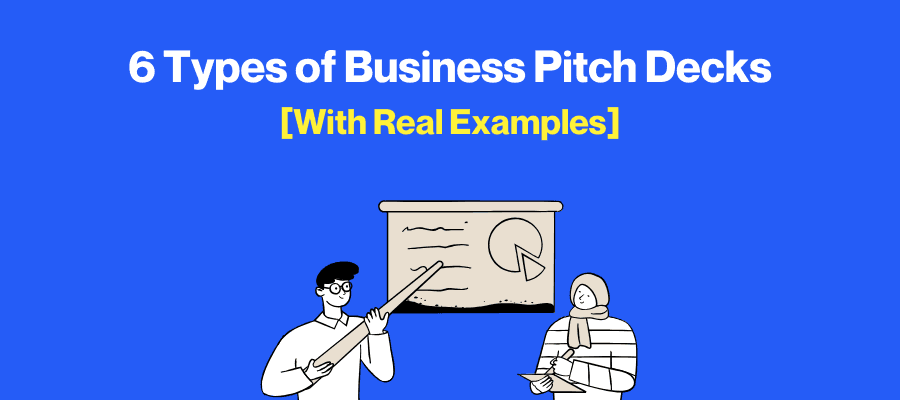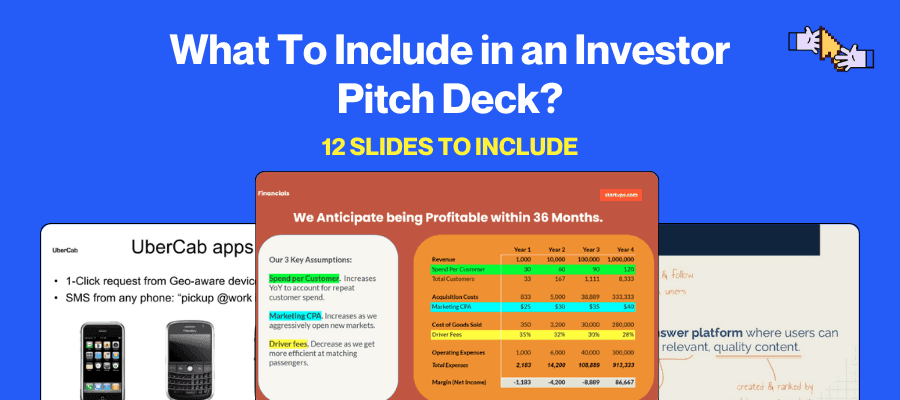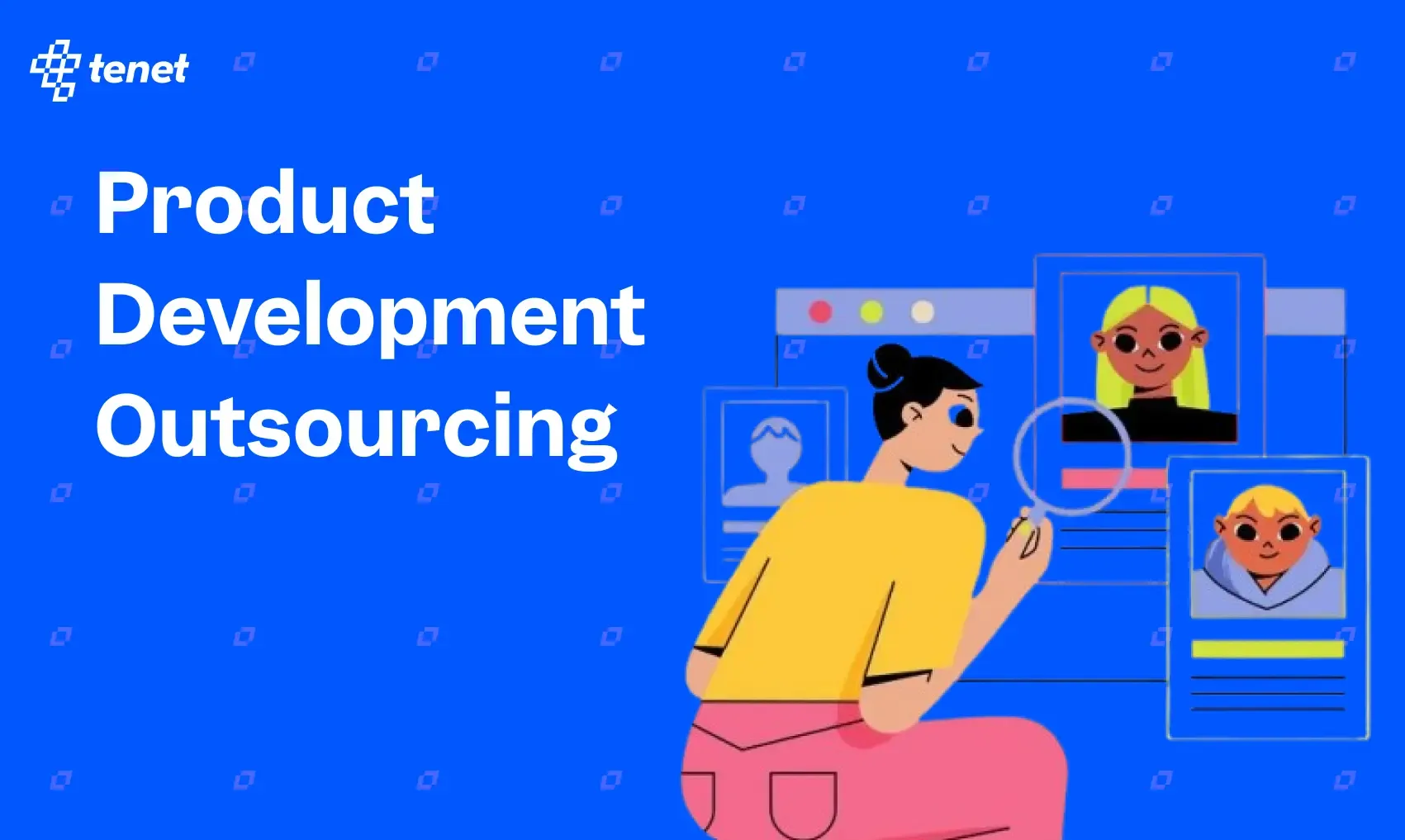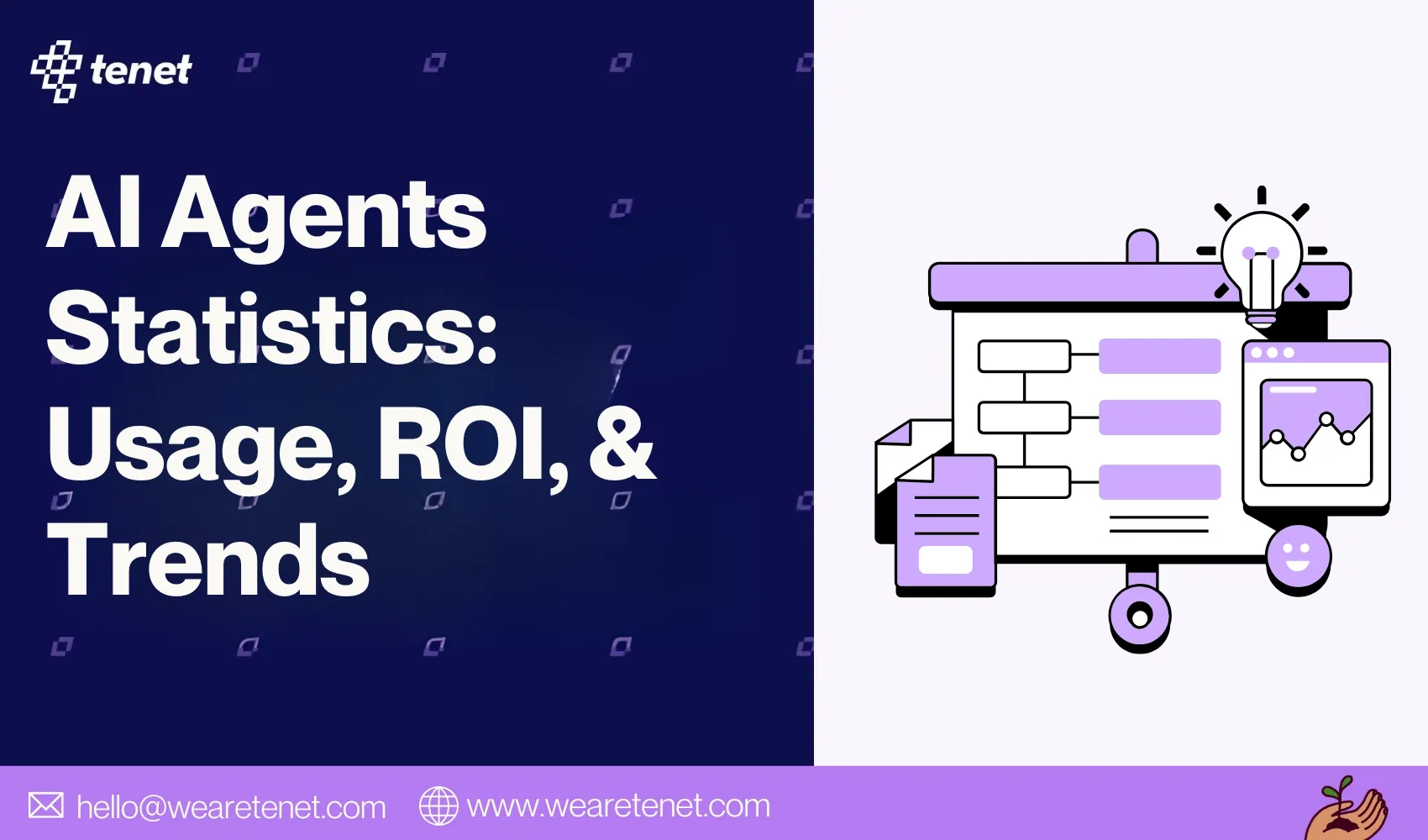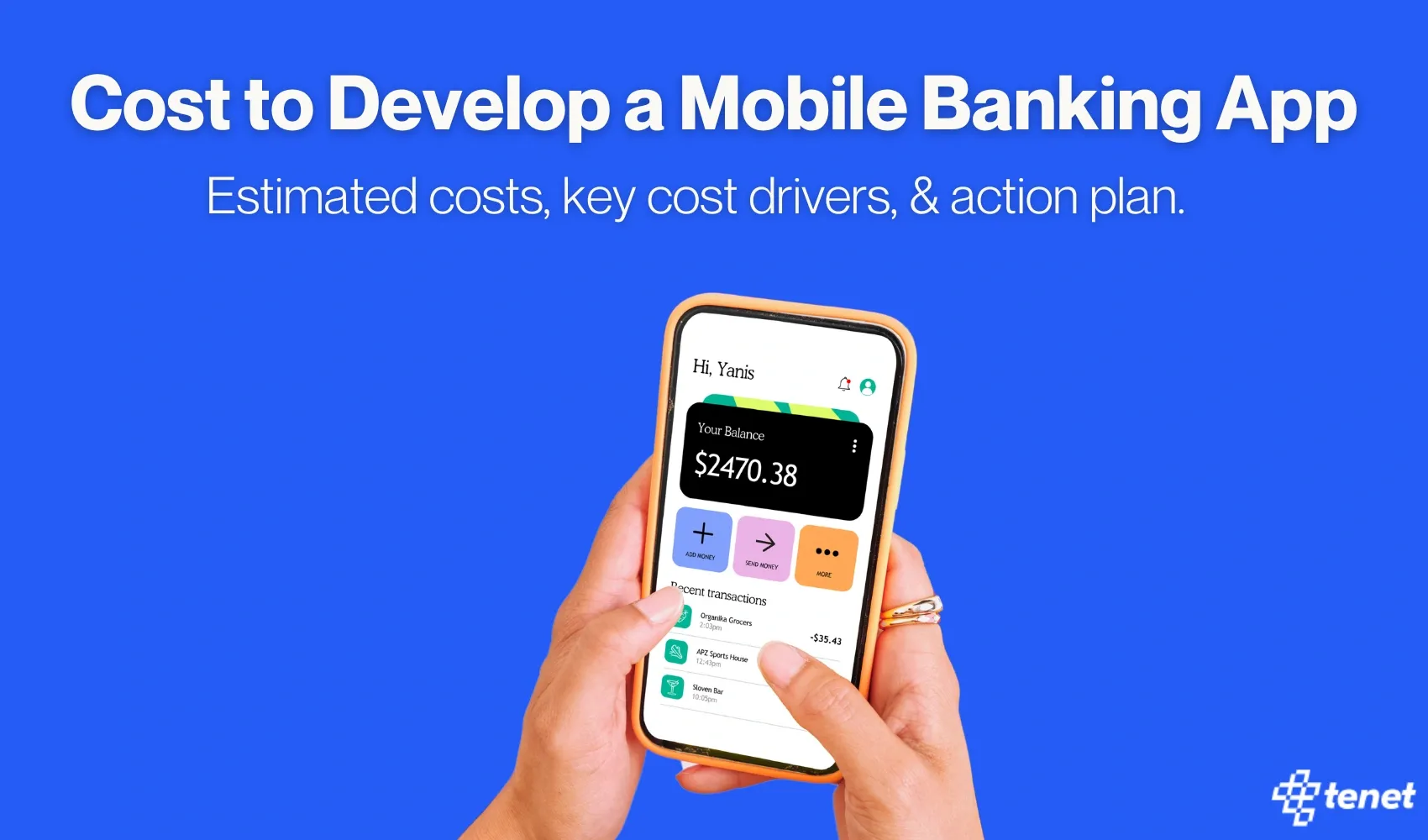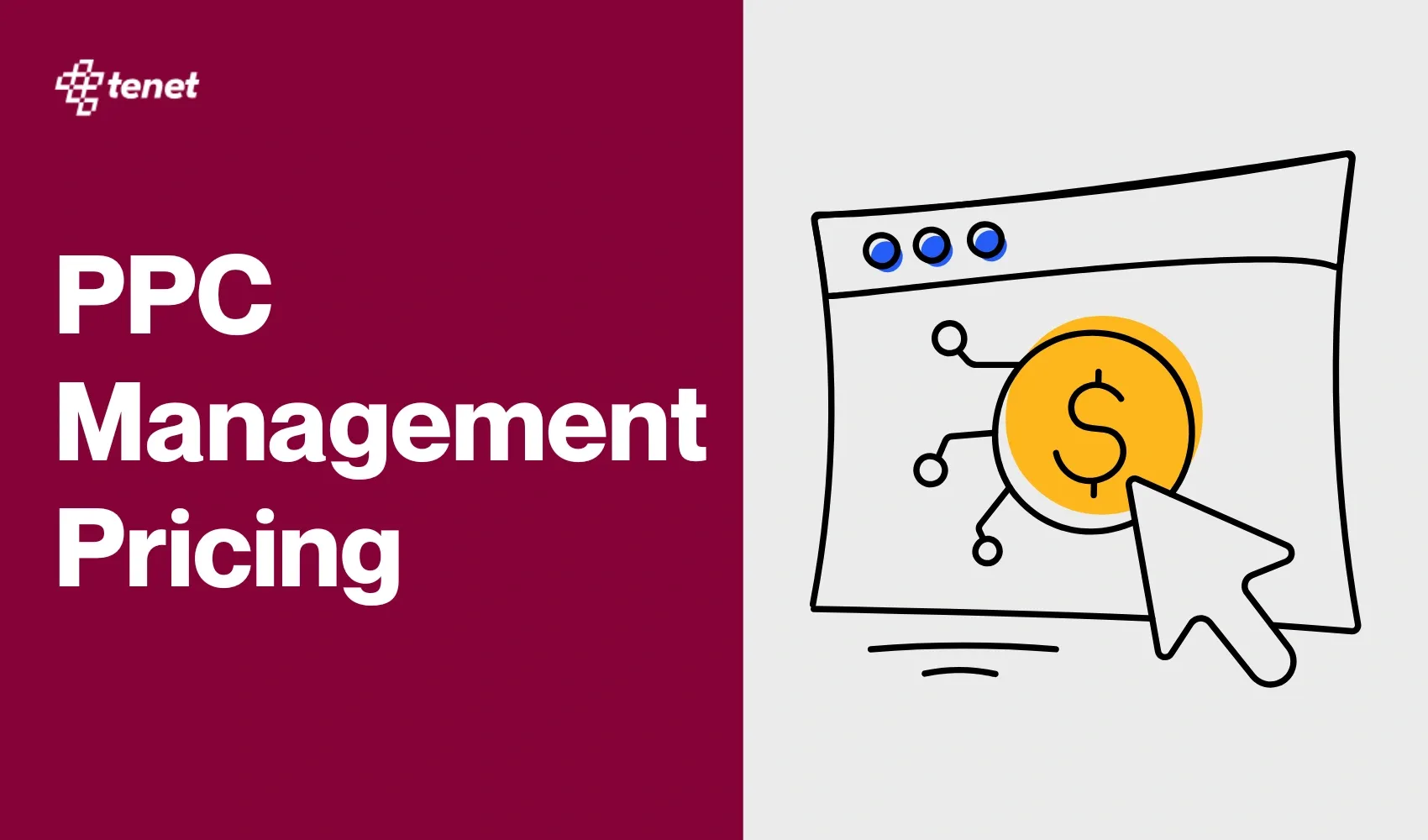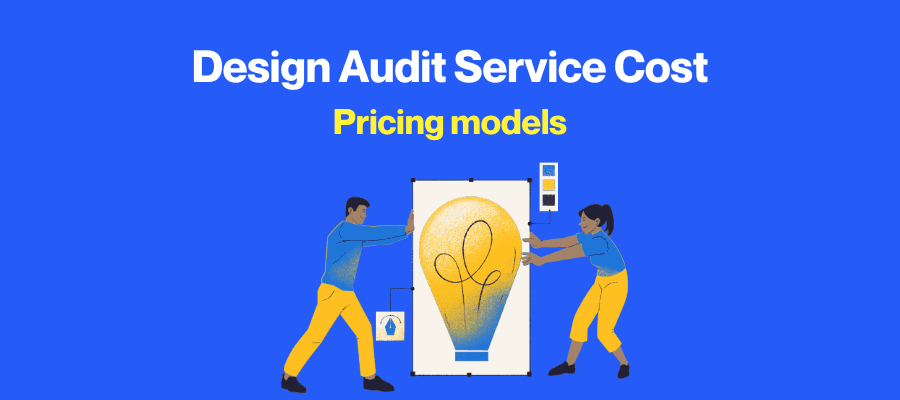10 Product Development Strategies That Work in 2025
Share
Share
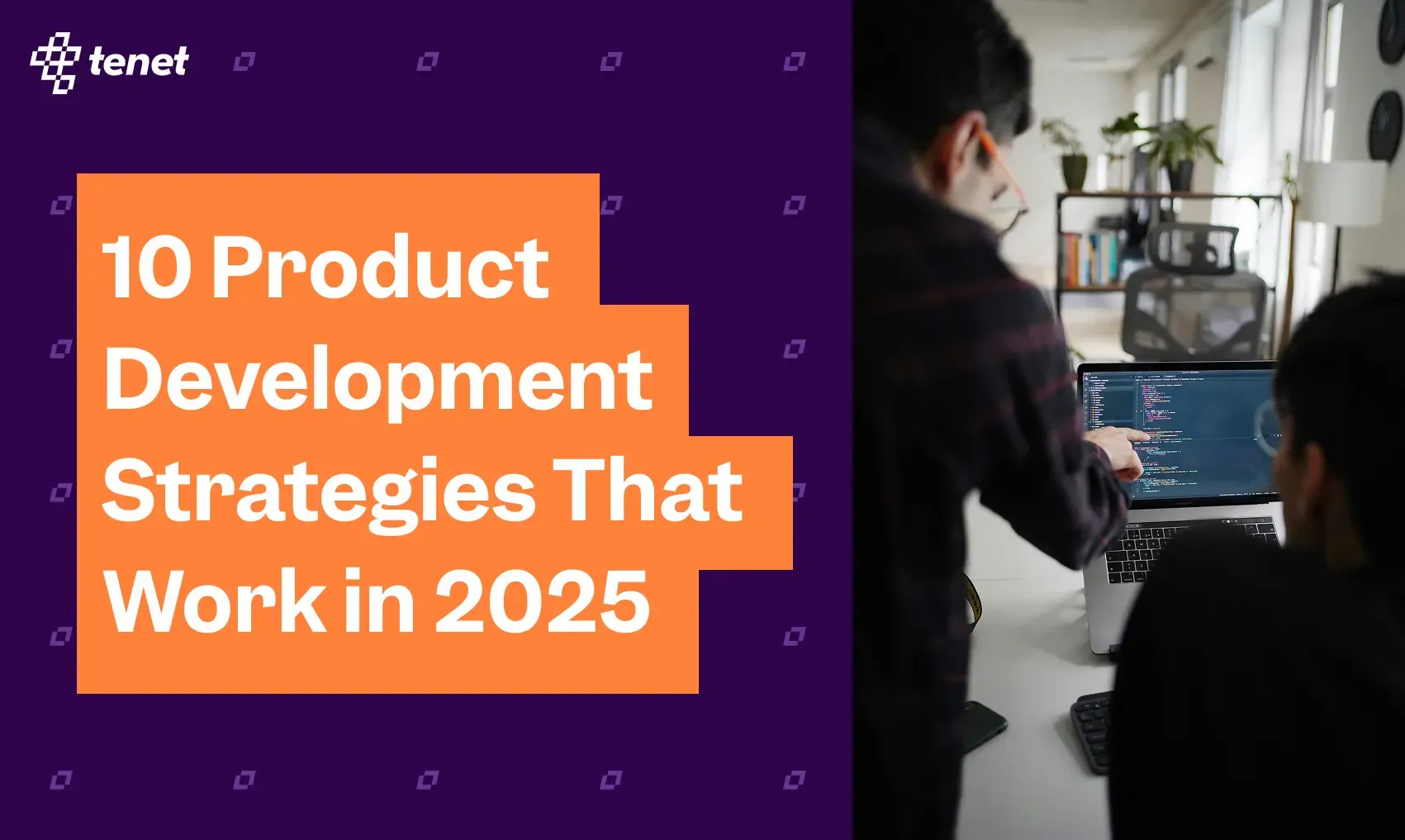
Bringing a product to market is exciting, but it’s tough as well because 95% of new products fail to meet their goals.
That’s why a well-thought-out Product Development Strategy is important.
It works like a roadmap from idea to launch, helping you avoid common mistakes and increase your chances of creating a product people actually want.
This blog will guide you through building a strong strategy and offer actionable steps to develop products that stand out.
What Is a Product Development Strategy?
A product development strategy is a structured plan used by businesses to guide the creation or improvement of a product. It outlines how a company will develop new products or enhance existing ones to meet market needs, stay competitive, and increase its growth.
This strategy isn’t only for startups or brand-new ideas, it also applies when you’re building on something that already exists. Whether you're launching from scratch or making steady improvements to an existing product, a product development strategy helps you move with purpose.
It typically includes:
- What you’re building
- Why you’re building it
- Who it’s for
- How you’ll deliver it to users
Done right, it helps you:
- Stay focused on solving real customer problems
- Choose the right features to build
- Avoid wasting time and resources on the wrong direction
In short, it’s the foundation that connects your product idea to real-world results.
Take Spotify as an example. They started as a basic music streaming service. Over time, based on user feedback, it introduced personalized playlists like Discover Weekly and a freemium model.
These strategic product developments were designed to enhance user experience, retain customers, and drive growth in the competitive music-streaming market.
👉 Explore our product design services by country:
- Digital Product Design Agency In Dubai
- Digital Product Design Services In UK
- Digital Product Design Services In India
- Digital Product Design Agency In New York
Key Benefits of Having a Product Development Strategy
Having a product development strategy isn't just a nice-to-have—it's a must-to-have .
Why? Because without a solid strategy and insights, only 60% of products that make it to market ever become profitable.
Here are some reasons why it’s impotant to have a Product development Strategy:
1. Helps You Focus on What Truly Matters
With a clear strategy, you can keep your focus where it should be: on solving actual customer problems.
Zoom is a perfect example of focusing on what really matters
When they started, their goal was simple—create a reliable, easy-to-use video conferencing tool.
While other competitors were adding unnecessary features, Zoom kept things simple: a straightforward and reliable tool for connecting people virtually.
This focus made it stand out, and during the pandemic, it became the go-to platform for virtual meetings.
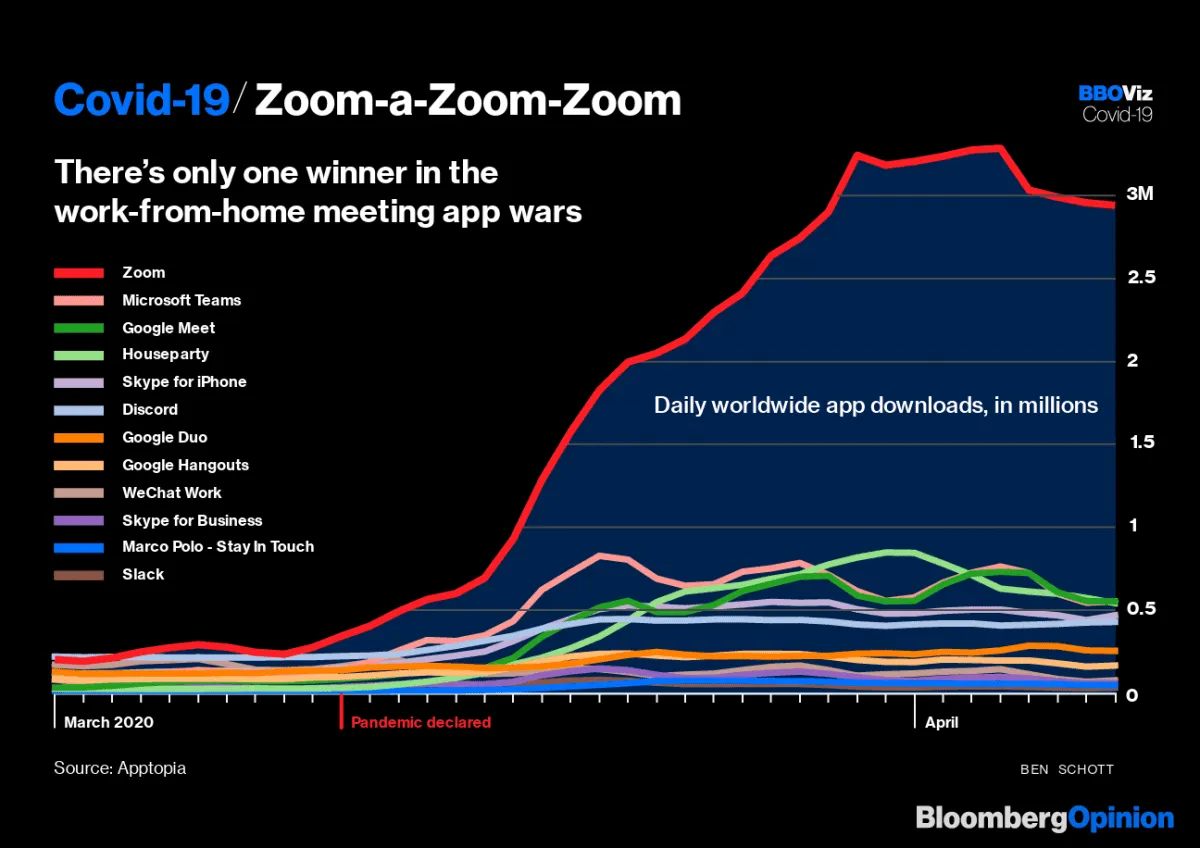
Image source: Zoom grew faster than it’s competitors by being easy to use and working well, especially when everyone needed video calls during the pandemic.
2. Reduces Wasted Effort and Resources
A good strategy helps you avoid spending time and money on things that won’t work.
For example, Apple stuck with what it knew best in the early years, making personal computers, and didn’t get distracted by other markets.
That focus laid the groundwork for everything that came after: the iPod, iPhone, and beyond.
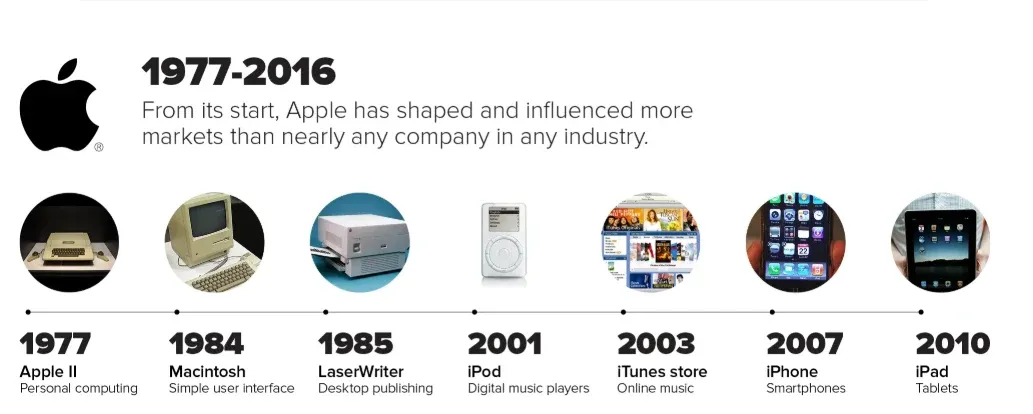
Image source: Apple's early focus on personal computers, as depicted in this timeline, laid the foundation for its future innovations.
3. Allows for Proactive Problem-Solving
Product development isn’t just about execution; it’s about anticipating challenges.
The best example of this is Airbnb. In their early days, they encountered problems with trust and safety from both users and hosts.
Instead of waiting for it to become a big issue, they built trust features early, like reviews, secure payments, and verified profiles.
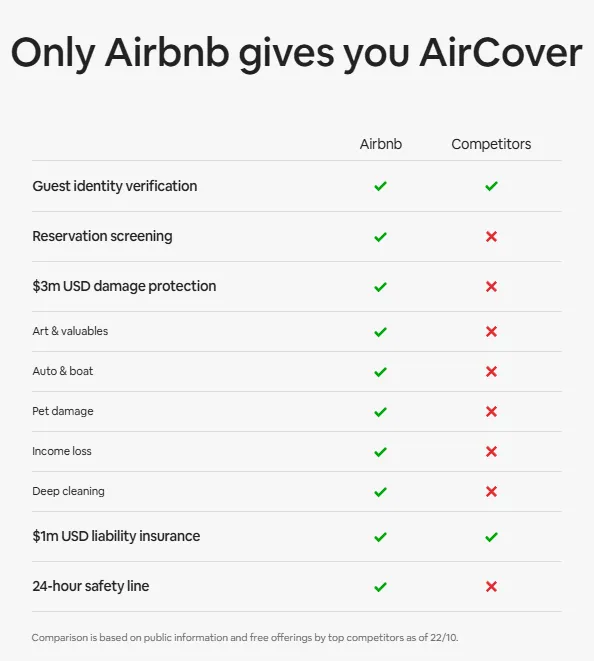
Airbnb implemented features like secure payments, verified profiles, and reviews to build trust among users.
4. Aligns Your Team Toward Common Goals
When everyone on the team knows exactly what they're working toward, they can get things done faster and better.
Example: Spotify made it clear from the beginning that their goal was to change how people listen to music.
Having this shared vision helped the team work together efficiently, allowing Spotify to grow quickly and become a leader in music streaming.
5. Makes Success Measurable
A clear strategy helps you know if you're moving in the right direction. With the right metrics in place, you can measure your success and make adjustments along the way.
Dropbox is a great example here.
Dropbox kept track of key metrics and tested its product regularly. By measuring progress, they were able to improve the user experience and add features that made their platform a must-have for millions of users.
How to create a product development strategy?
Whether you're launching a brand-new product or enhancing an existing one, having a strategic approach can make all the difference between success and failure.
But the way you develop that strategy varies greatly depending on where your product stands in its lifecycle.
Let’s take two scenarios:
Scenario 1: Developing a New Product
1. Identifying a Market Need
The foundation of any new product is identifying a gap or a pain point in the market. You’ll need to conduct thorough research (e.g., surveys, focus groups, competitor analysis) to understand your target audience’s unmet needs.
💡 Actionable Insight:
Start by speaking directly to potential customers and industry experts. Use tools like Google Trends or forums like Reddit to see what people are saying about challenges related to your market.
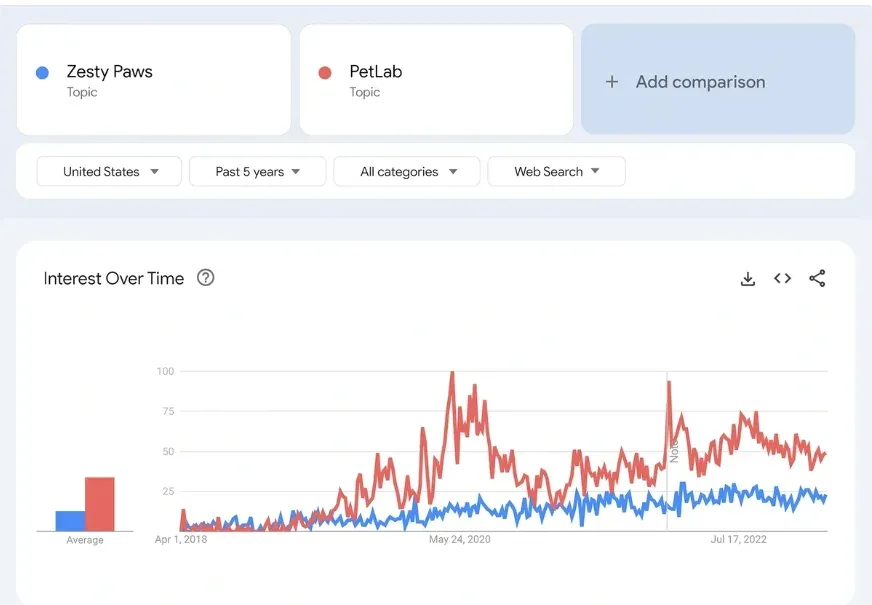
An image to show how you can find out where your audience is and where you’re missing out.
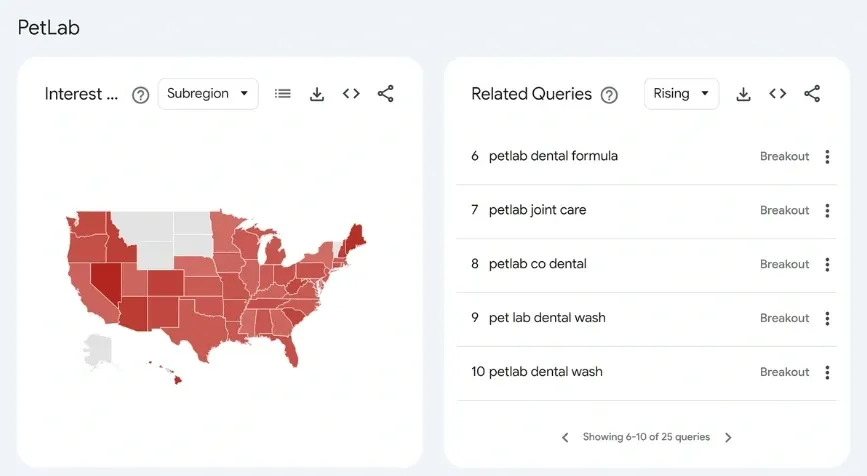
A visual on how you can validate brand momentum before you invest.
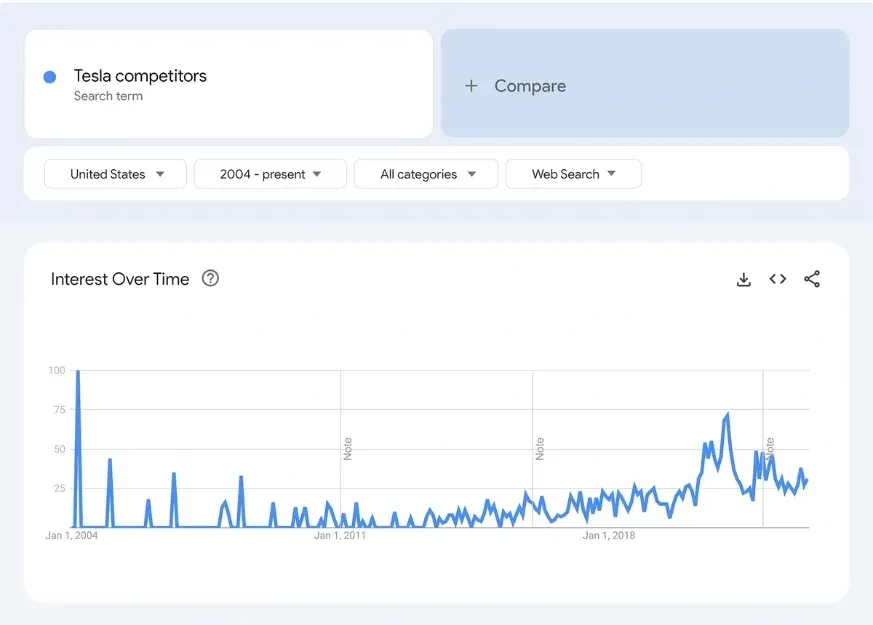
A visual on how you can use google trends to tTrack rising interest in your competitors before the market shifts.
2. Building a Minimum Viable Product (MVP)
Instead of building a fully featured product right away, focus on creating an MVP (Minimum Viable Product)—a version of your product that solves the core problem and can be tested quickly with real users.
💡 Actionable Insight:
Use feedback from early adopters to make data-driven decisions on the next steps and avoid unnecessary features that don’t add value.
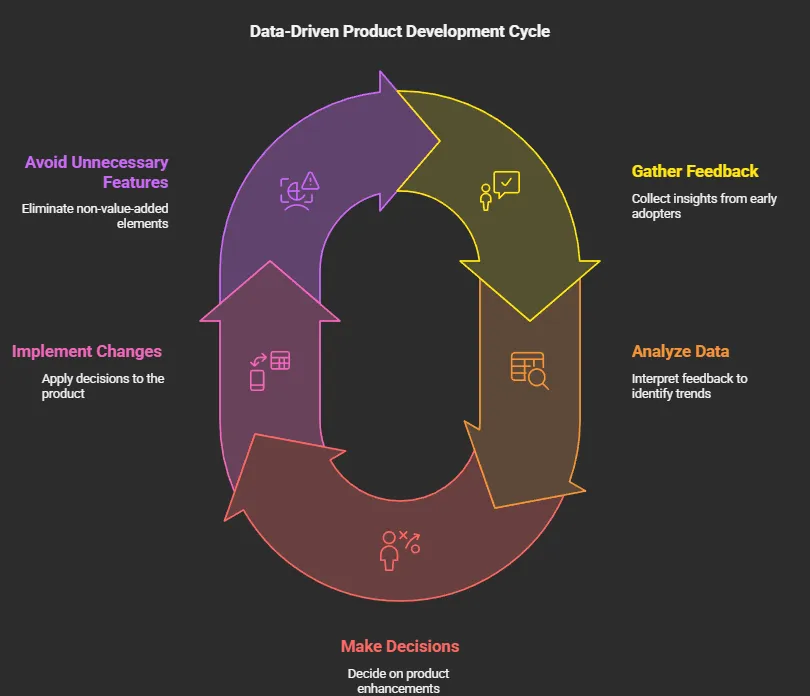
A visual snapshot of how MVPs evolve through user feedback and data-driven iterations
3. Defining a Clear Value Proposition
Clearly communicate what makes your product unique and why customers should care. This is especially important in a crowded market where many similar solutions may already exist.
💡 Actionable Insight:
Develop messaging that is customer-centric.
Ask yourself, “Why should my target audience choose this over existing solutions?” Make sure your value proposition is simple, direct, and compelling.
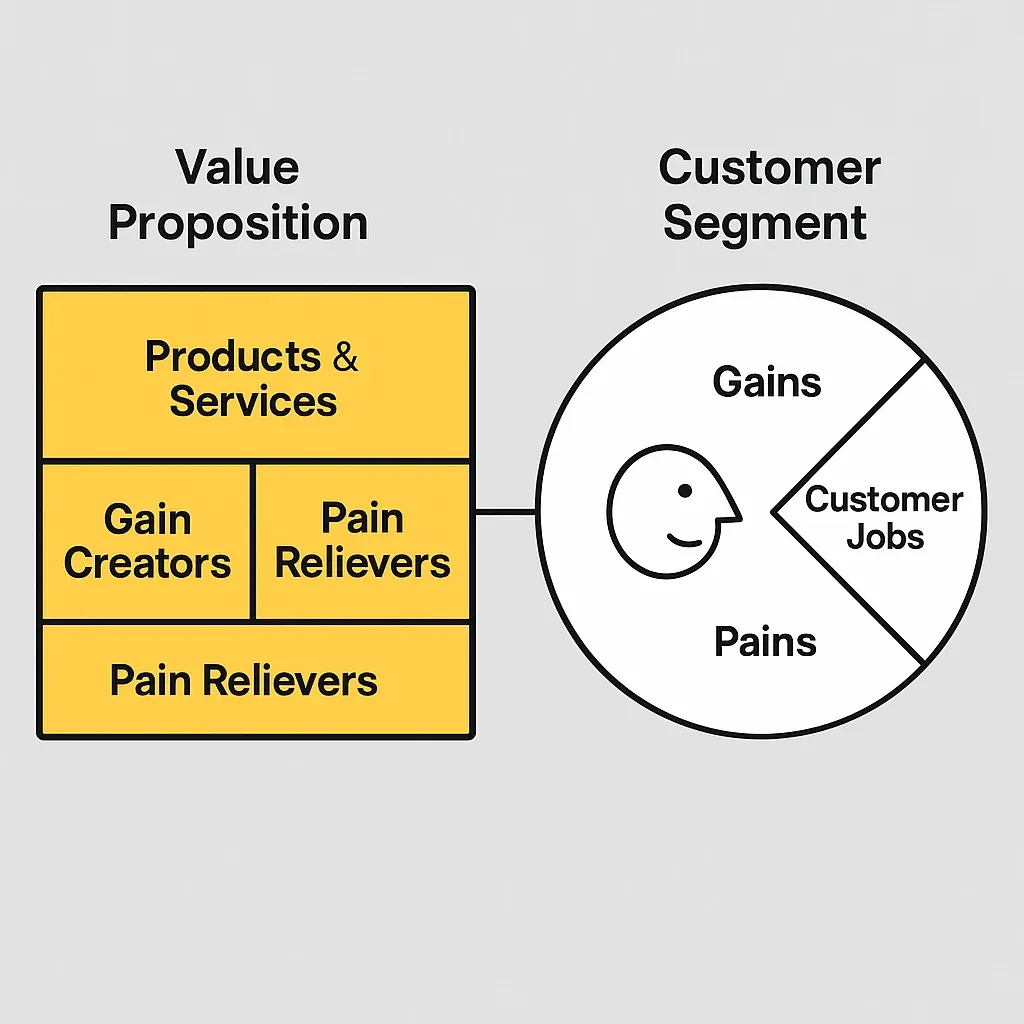
A visual of the Value Proposition Canvas - mapping how your product solves customer pains, creates gains, and fits their needs.
4. Testing and Iterating
One of the most IMPORTANT steps in developing a new product is iteration. You'll need to test, get feedback, and improve continually.
💡 Actionable Insight:
Run alpha/beta tests with a small group of users to evaluate specific features. Focus on testing:
- User experience (UX): Is the interface intuitive? Are users able to easily navigate and complete tasks?
- Core functionality: Does the product perform its main tasks smoothly without errors?
- Performance: Is the product fast and responsive across devices and platforms?
Also track the following KPIs:
- User engagement: Time spent on the product, frequency of use
- User retention rate: Percentage of users who return after the first use
- Task success rate: Percentage of users who complete key actions or goals
- Net Promoter Score (NPS): A measure of user satisfaction and likelihood to recommend the product
Be prepared to pivot if the feedback indicates that certain features or aspects need drastic changes.
5. Building a Go-to-Market (GTM) Strategy
Developing a GTM strategy is necessary to launch your product successfully. This involves positioning your product, selecting the right channels, and building buzz before the official launch.
💡 Actionable Insight:
Use digital marketing channels like content marketing, social media, and influencer partnerships. Consider creating early access or exclusivity offers to build anticipation.
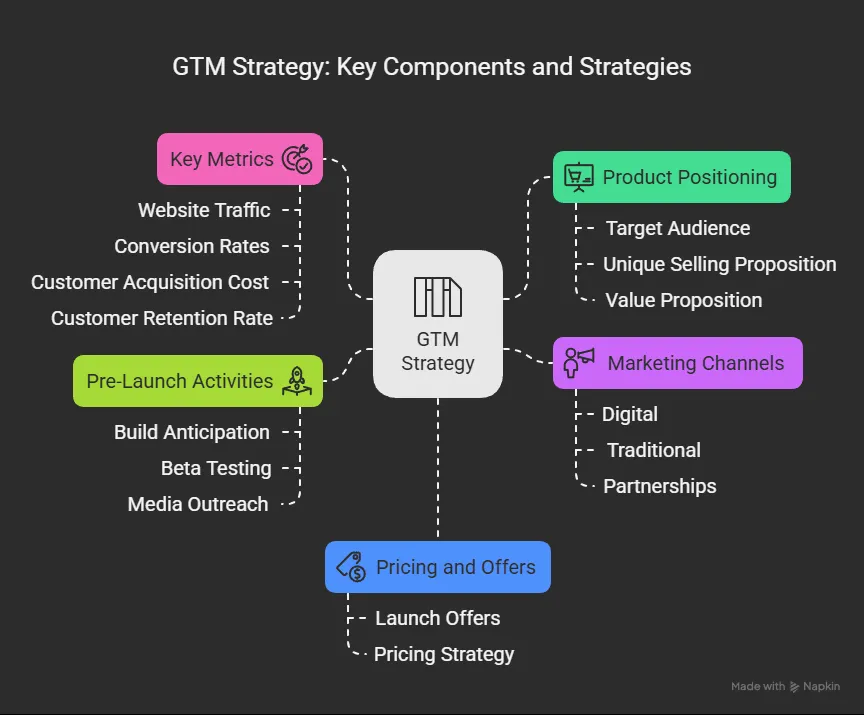
Image showcasing the main components of the GTM Strategy
Scenario 2: Developing an Existing Product (Expansion or Improvement)
1. Engaging with Current Users
Your current customers are a goldmine of feedback. By understanding what they love and what they feel could be better, you can direct future product improvements effectively.
💡 Actionable Insight:
Use customer support tickets, surveys, and user interviews to understand pain points. Engage your loyal customers by offering incentives for their feedback.
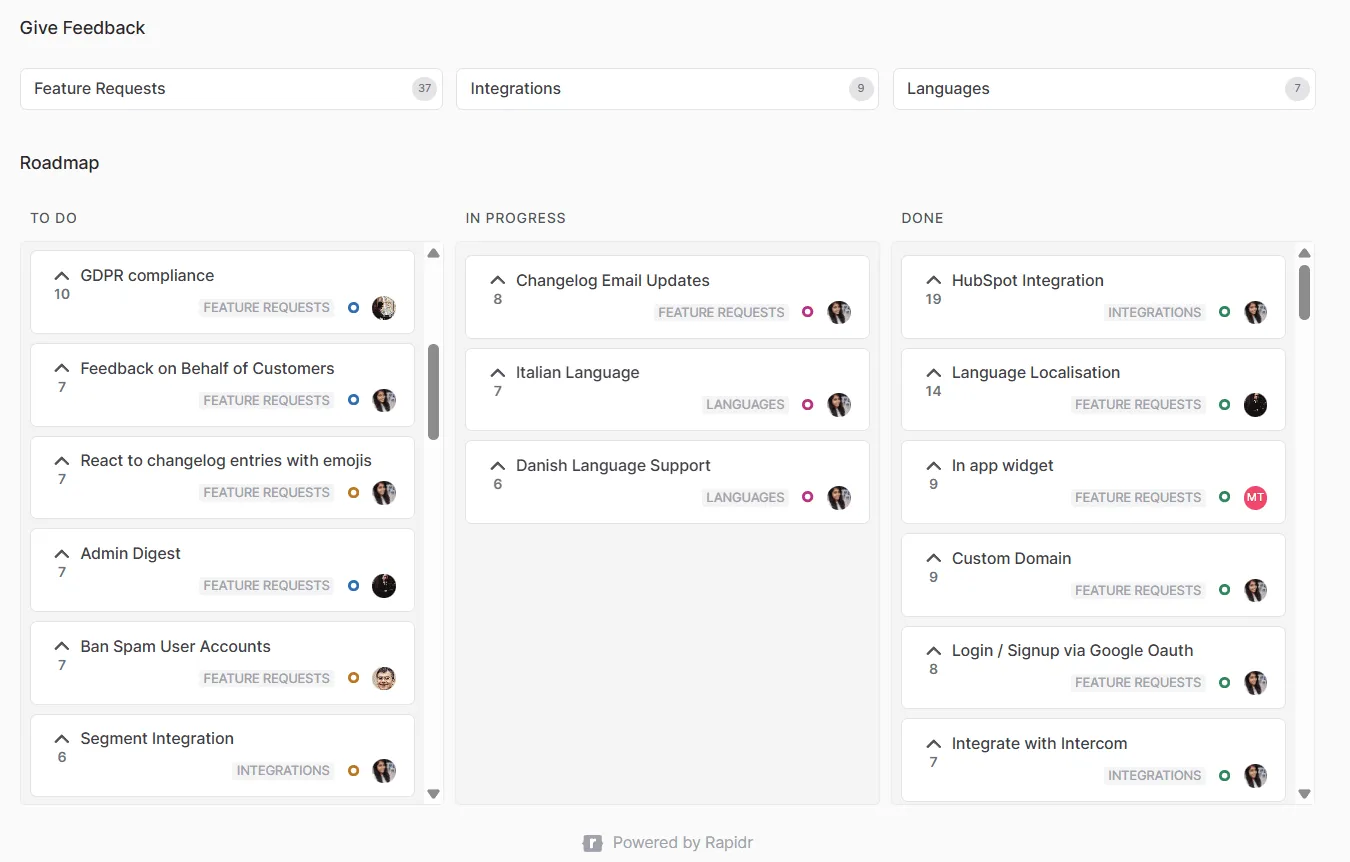
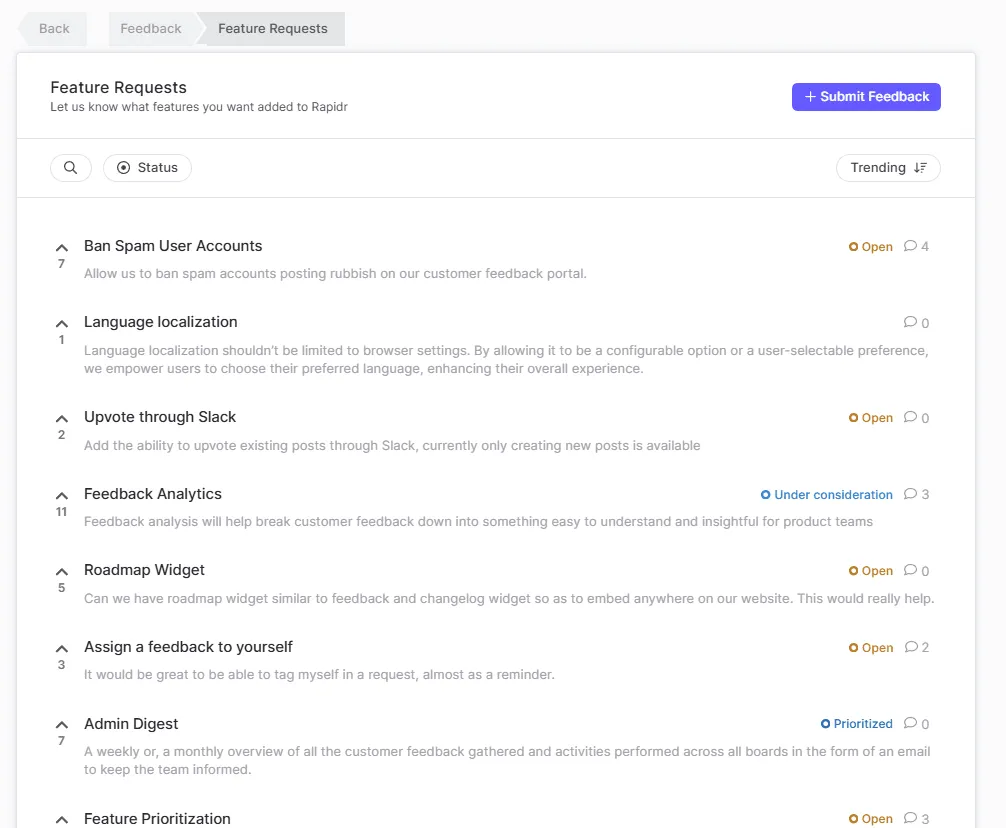
Image source: feedback that Rapidr got in-app
2. Feature Prioritization Based on Data
For an existing product, decisions need to be based on real user data. Look at usage analytics, customer satisfaction surveys, and feature requests to prioritize new features or improvements.
Simple Example: Imagine you built a to-do list app.
- You notice only 10% of people use the “reminder” feature → maybe it’s too hidden or not useful.
- You run a quick survey and 60% say they wish your app worked with Google Calendar.
- And you’ve gotten 100 emails requesting a dark mode.
That’s your real data.
Now, to decide what to build first, you can use a method like RICE:
- Reach: How many people will benefit?
- Impact: Will it solve a big problem?
- Confidence: Are you sure it will help?
- Effort: How hard is it to build?
Pick the features that help most people, solve big problems.
💡 Actionable Insight:
Use frameworks like the RICE (Reach, Impact, Confidence, and Effort) like explained ablove as a scoring model to assess which features to build next.
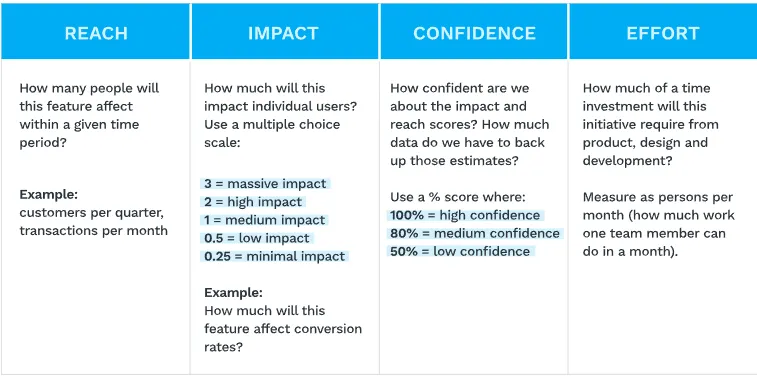


source: Visuals describing the RICE framework
3. Keeping the Product Relevant
In a competitive market, it’s important to continually evolve. Stay ahead of the competition by adding features, improving performance, or enhancing user experience.
To do so you need to do following things:
1. Check how is your product is doing
Don’t wait until users complain. Every month or so, check:
- Are people using the features you built?
- Are they sticking around, or leaving quickly?
- Are there a lot of support questions or bugs?
What to do: Pick 2–3 simple numbers to track. For example: how many people used a feature, or how long they stayed.
2. Ask users what’s working (and what’s not)
The best way to improve is to ask real users:
- What do they like?
- What’s confusing?
- What do they wish your product had?
What to do: Use small surveys, or a “Give feedback” button in your app or website to get the real data.
3. Keep an eye on your competitors
You don’t need to copy them, but you should know what they’re doing:
- Are they launching new features?
- Are users unhappy with something?
What to do: Every few months, read their website updates or check reviews on G2 or Capterra.
4. Make small improvements, regularly
You don’t need to build big new features all the time. Small changes help a lot:
- Make buttons clearer
- Fix annoying bugs
- Speed up slow pages
5. Decide what’s most important to fix first
You’ll have lots of ideas, but you can’t do them all at once. Use a simple method like RICE ( explained in the point 2) to decide:
- How many people will this help?
- How big is the impact?
- How sure are you it’ll work?
- How much time will it take?
What to do: Give each idea a score, and start with the highest ones.
💡 Actionable Insight:
To conduct competitor analysis effectively, follow these steps:
- Track Product Updates: Use tools like Google Alerts or Feedly to stay informed about competitors’ new features or changes.
- Analyze Reviews: Dive into user reviews on G2 or Capterra to spot pain points your product can solve.
- Use Competitive Intelligence Tools: Tools like SEMrush reveal competitors' marketing strategies, helping you identify gaps.
- Test Competitors’ Products: Get firsthand experience with their products to see where you can improve the user experience.
- Monitor Social Media: Use Hootsuite or Brandwatch to track feedback and sentiment around competitor brands.
Regular competitor analysis helps you pinpoint opportunities to differentiate and improve your product.
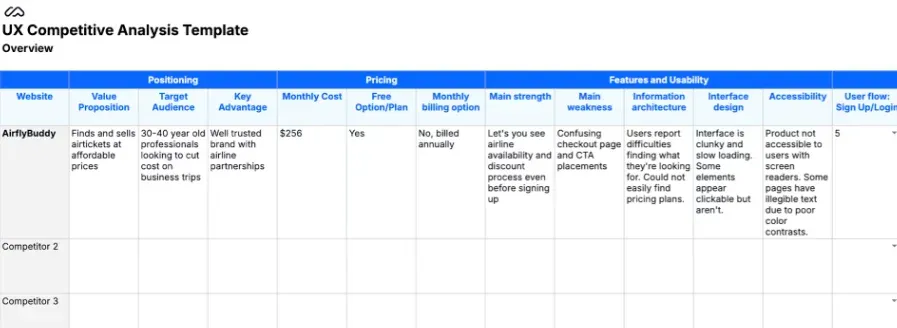
Image of a dashboard showing a competitive analysis template
4. Maintaining Customer Retention
The long-term success of your product depends on customer retention. Make sure your improvements address your existing customer base's evolving needs.
Because your loyal users are the ones who trusted you first, and they’ll leave if they feel forgotten.
Here’s how to make sure the improvements are making the existing customers happy as well:
- Ask what’s missing. Run short surveys or hop on a quick call. You’ll hear things that don’t show up in data.
- Fix what frustrates them. Even tiny bugs can push users away if they’re in key workflows.
- Make them feel valued. Early access to features, helpful emails, or a simple “we built this because of you” goes a long way.
💡 Actionable Insight:
Introduce loyalty programs, enhance customer support, and use email marketing to keep users engaged with product updates.
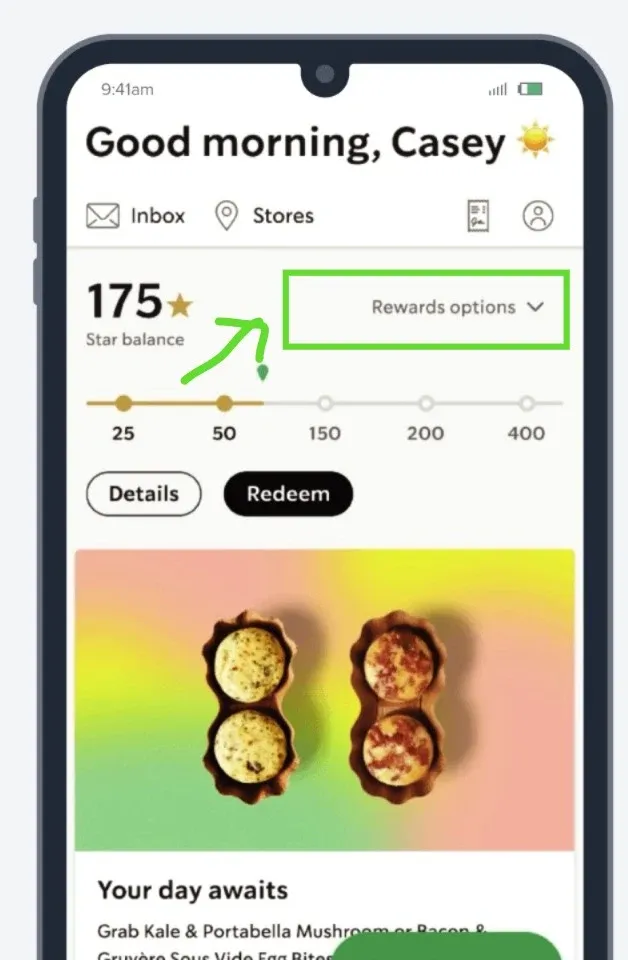
Visuals showing customers engaging with reward programs.
5. Incremental Releases and Continuous Feedback
Avoid massive updates that might disrupt your user base. Instead, roll out incremental improvements and gather feedback at each stage.
💡 Actionable Insight:
Adopt agile methodologies—release updates in small batches and use feedback loops (such as A/B testing) to ensure changes resonate with users.
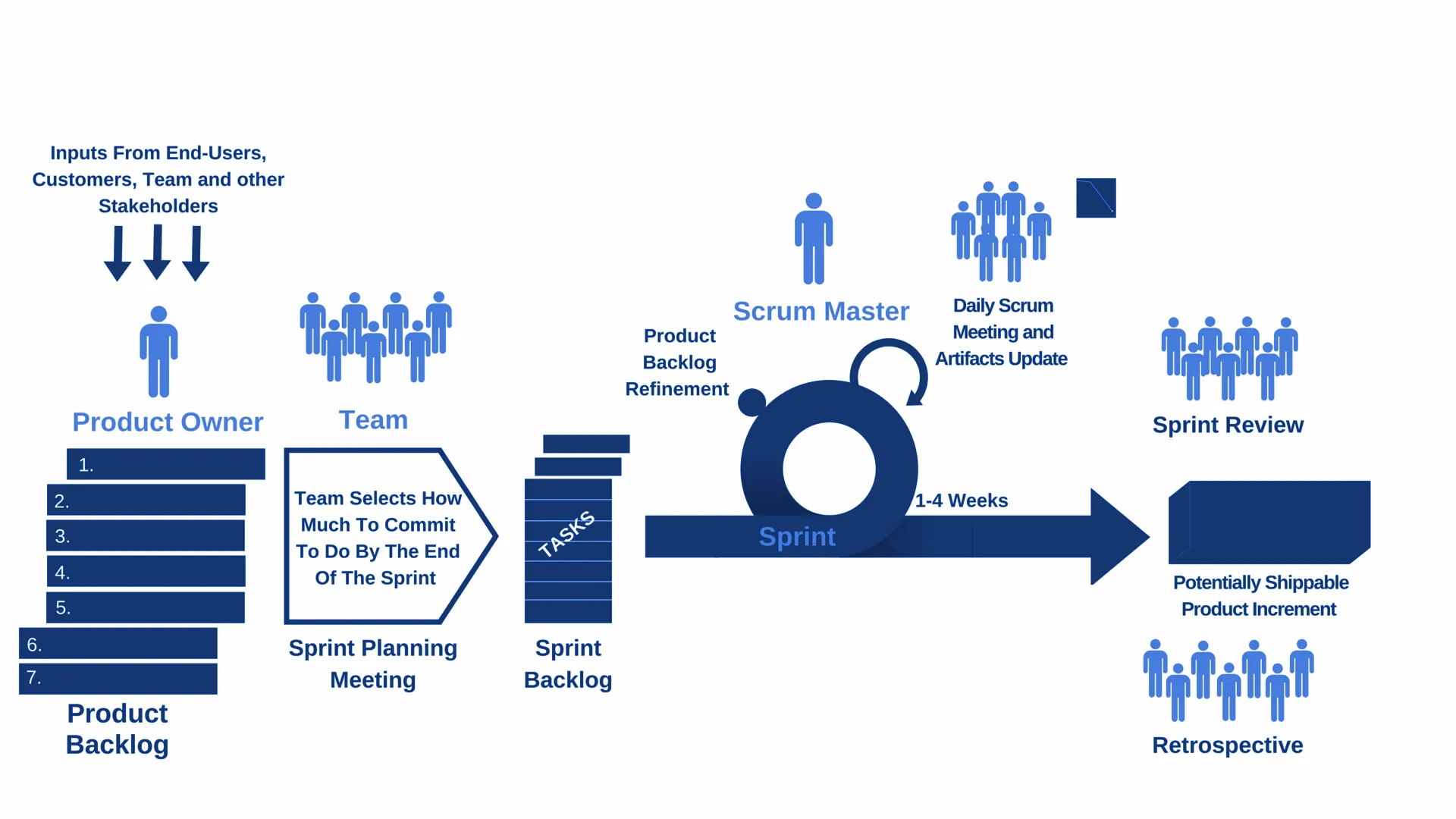
Image illustrating the continuous cycle of planning, development, testing, feedback, and iteration.
Product Development Strategies to Implement
Product development isn’t a one-size-fits-all approach. Depending on your goals, resources, and market conditions, you may choose one (or a mix) of these strategies to develop your product effectively.
Let’s break down some of them:
1. Market Expansion
Category: Growth Strategy
What It Is:
Expanding your existing product to new customer segments, either in different industries or geographic regions, without rebuilding it.
Why It Works:
You reach more users and without rebuilding your product, allowing growth based on what already works & with minimal risk.
For example, Slack expanded to industries like education and legal, while Spotify scaled globally after launching in Sweden.
When to Use:
When your product has a strong product-market fit in its current segment, and you're ready to explore new markets.
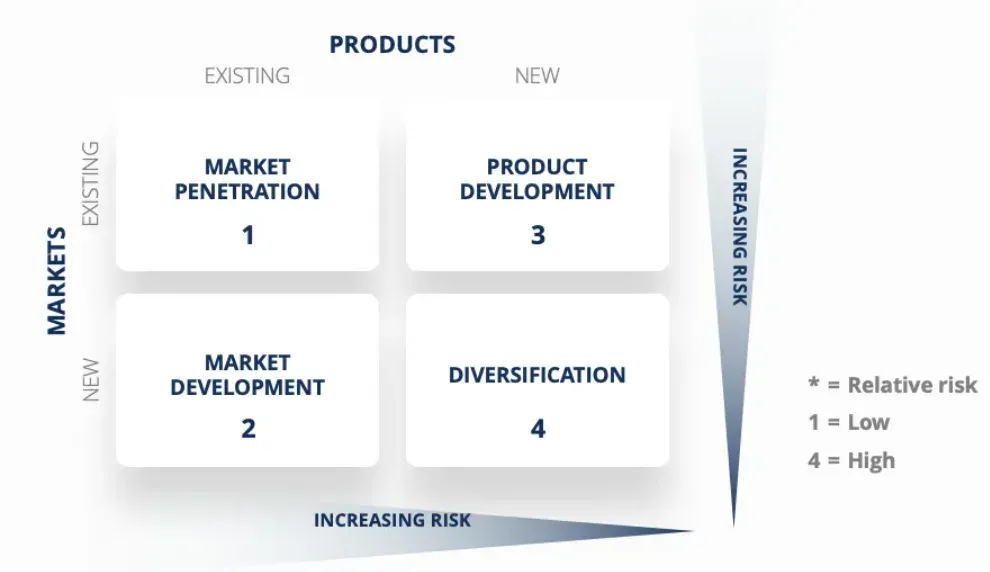
A visual representation of the market expansion strategy, illustrating how a product moves from existing markets to new ones.
2. Product Improvement
Category: Enhancement Strategy
What it is:
Improving your existing product by making bug fixes, introducing new features, refreshing the user interface, or optimizing performance, all based on user feedback and changing needs.
Why it works:
It keeps your users engaged and reassured that their experience matters. It also helps maintain a competitive edge. A great example is Dropbox, which started as a simple file storage tool but evolved into a complete workspace with collaboration features like Dropbox Paper.
When to use:
When users start complaining, engagement drops, or competitors begin offering more advanced or polished solutions.
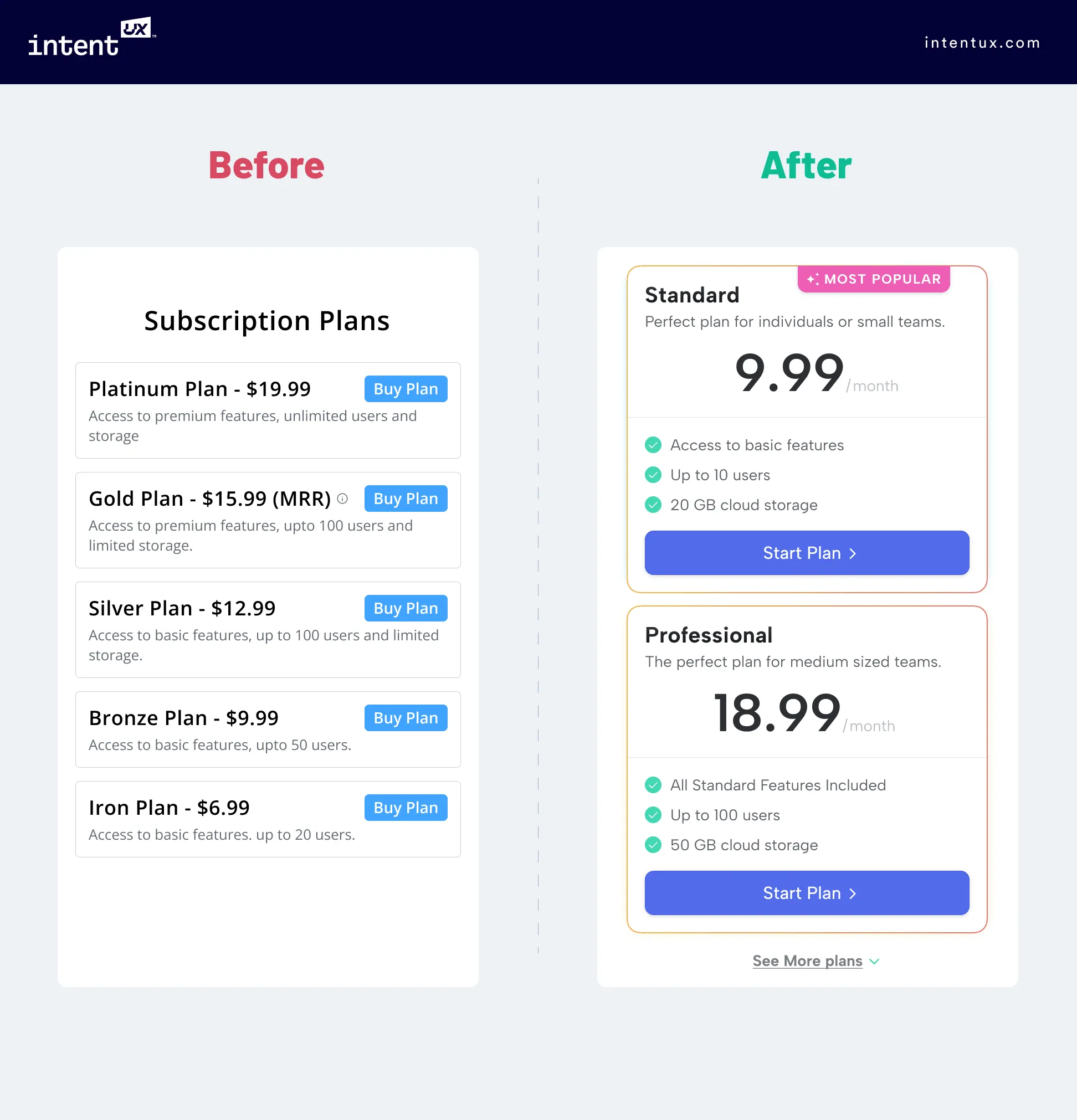
Visuals showcasing the transformation of a product interface, highlighting improvements in design and functionality.
3. Content Localization
Category: Growth Strategy
What it is:
Modifying your product's language, content, and user experience to suit different cultural or regional audiences. This includes translating text, adjusting visuals, and aligning functionalities with local expectations.
Why it works:
People are more likely to use your product if it feels familiar to them. For example, Spotify expanded its reach by localizing its platform into 73 languages. Similarly, Airbnb's success in various countries is attributed to its efforts in adapting to local cultures and regulations.
When to use:
Prior to launching in markets with different languages, cultural norms, or user behaviors.
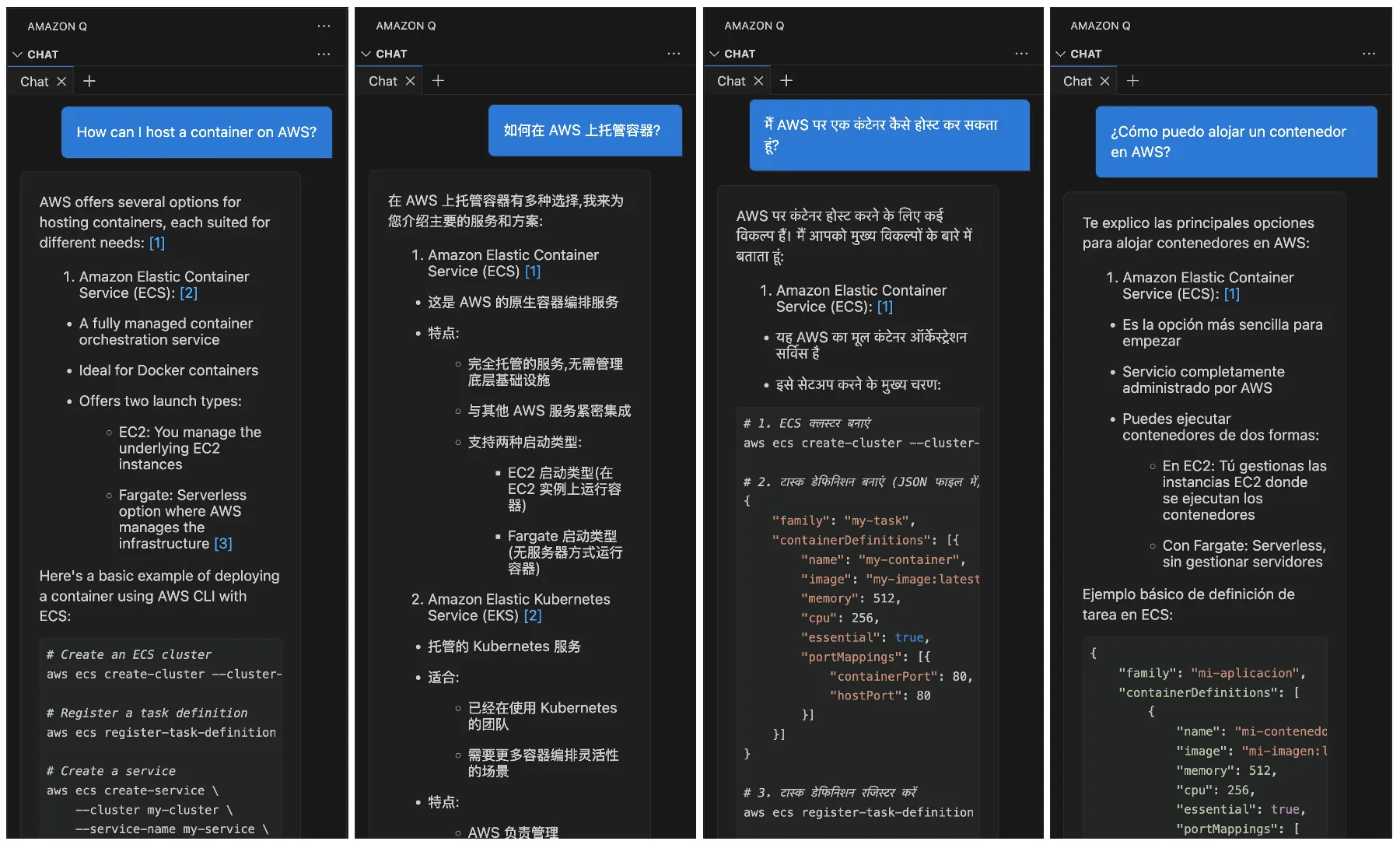
A visual showcasing how AWS keeps the natural flow of conversation in any language going even internally.
4. Platform Extension
Category: Growth Strategy
What it is:
Making your product available on more platforms. For example, if it’s only on desktop, you can build a mobile app. Or if it’s a web app, you can make a Chrome extension or a version for iOS.
Why it works:
It helps people use your product in the way that feels easiest to them. For example, Notion added a mobile and web clipper version so users could access notes anywhere.
When to use:
When people ask for a version of your product on a different platform, or when fewer people are using the one you already have.
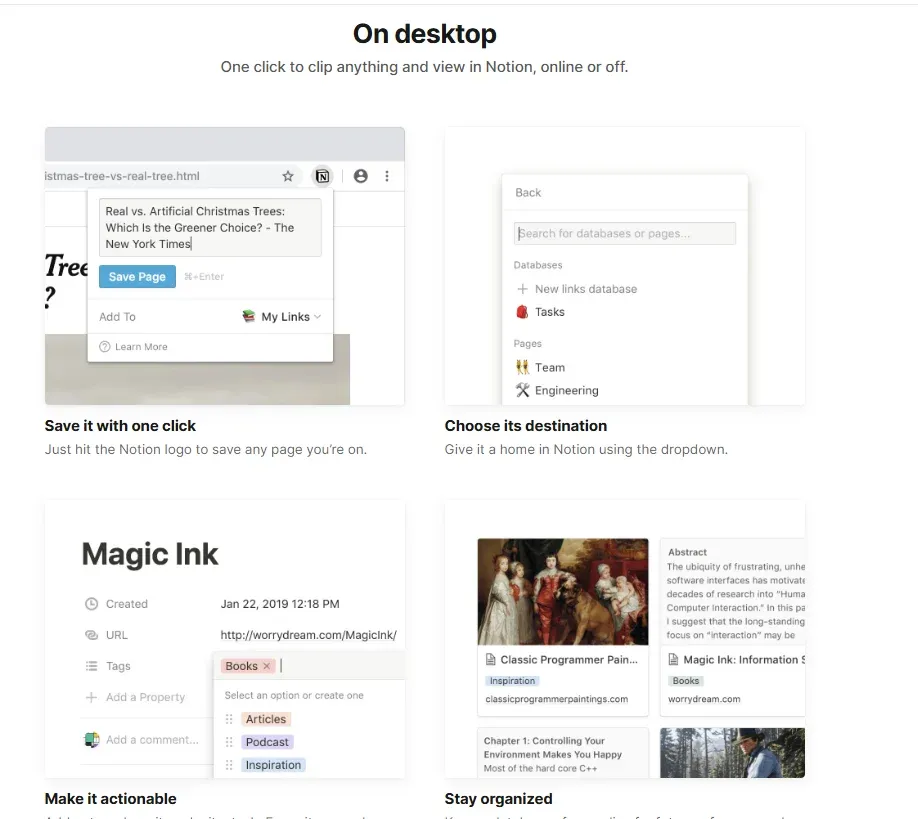
Picture showing Notion’s web clipper version
5. Bundling or Packaging Changes
Category: Growth Strategy
What it is:
Changing how you charge for your product. You can group features into different pricing plans (basic, pro, etc.) or offer add-ons. This gives users options based on what they need and how much they want to pay.
Why it works:
Some people only need the basics, while others use your product a lot and are willing to pay more. For example, Zoom has a free plan, but larger teams pay for extra features. Dropbox also uses this model to serve both individuals and businesses.
When to use:
When you're looking to grow revenue or reach users who can’t afford a full-priced plan.
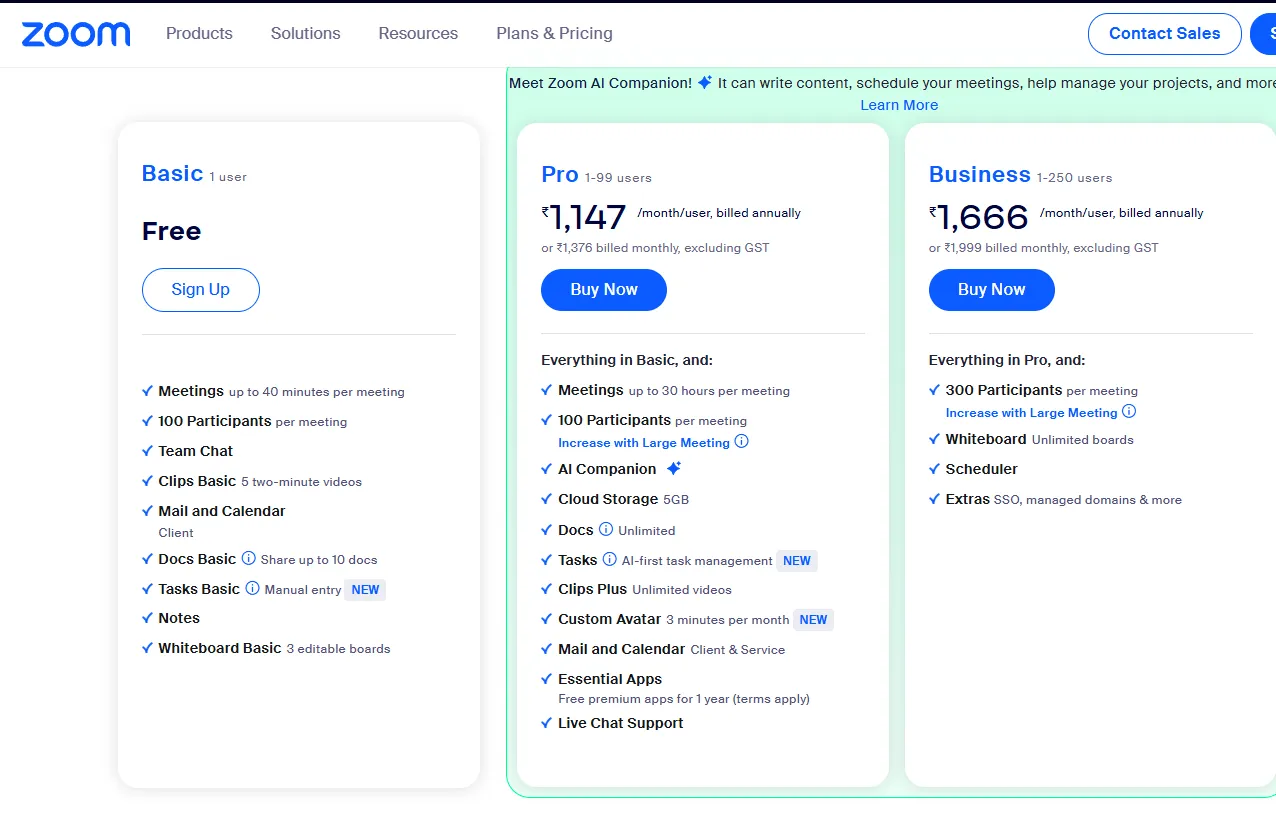
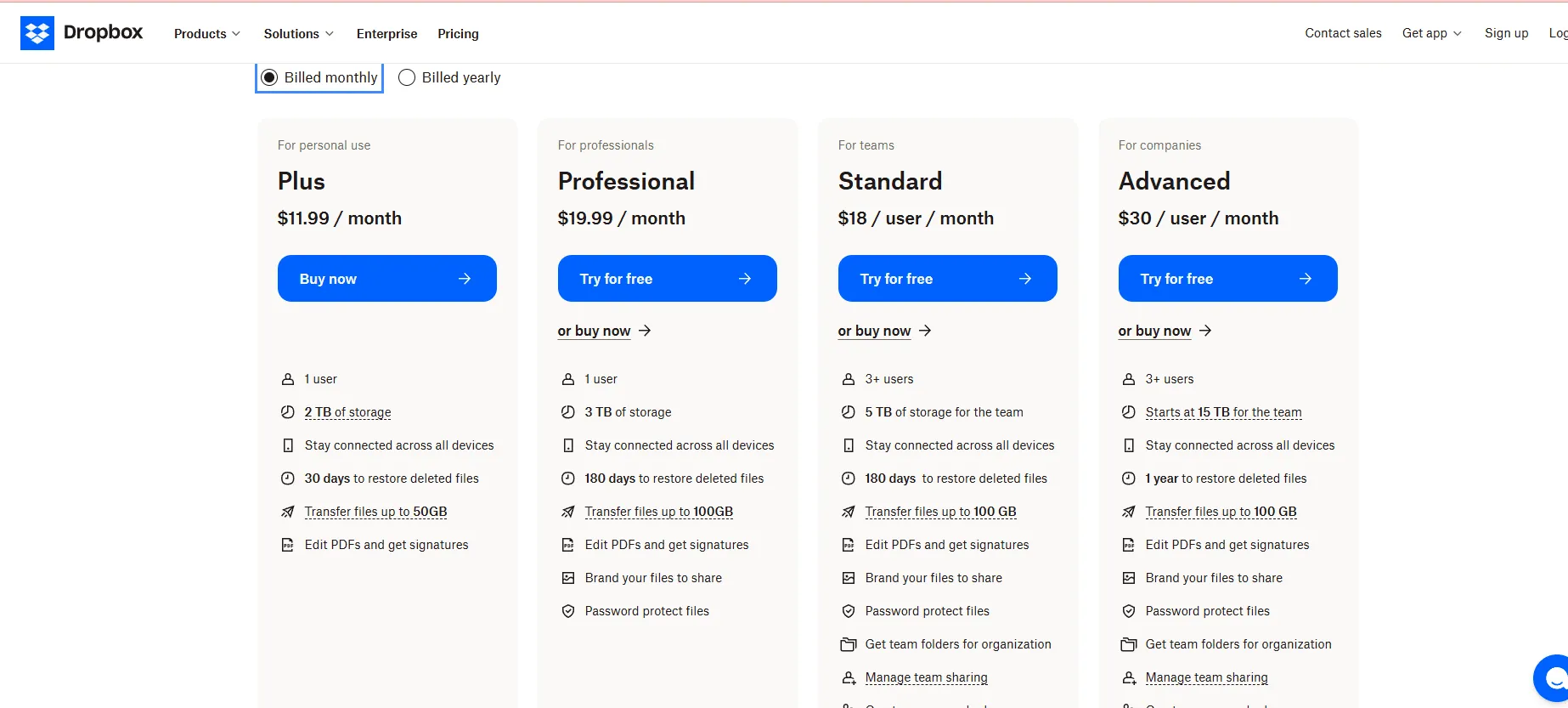
Images of Zoom & Dropbox’s pricing plan showing how they provide a free basic plan or free trials of each plan
6. Customer Interview Loops
Category: Discovery & Validation
What it is:
It means having regular, open conversations with your users to learn how they use your product and what’s getting in their way. It’s not about selling or pitching, just listening and asking good questions. These chats often bring up insights that data dashboards can’t show you.
Why it works:
You get to hear real problems in your users’ own words. This helps you build better features, write clearer messages, and decide what to build next.
When to use:
Before launching something new, or when you're unsure what users actually need.
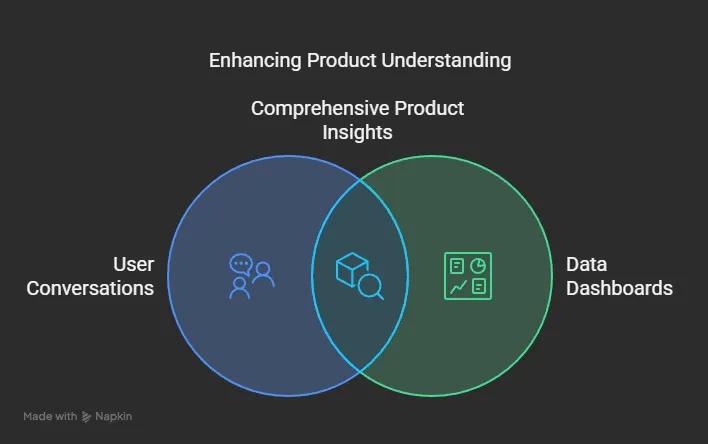
An image showing product understanding using user conversations
7. One-Pager Feature Test
Category: Concept Testing
What it is:
You create a short, clear explanation of your product idea- “just one page”. It explains what the idea is, who it’s meant for, and why it matters. Then you show it to real users and ask for honest feedback.
Why it works:
It helps you see if the idea makes sense before spending time building it. If users are confused or not interested, that’s a sign to rethink. It saves time and avoids launching something no one wants.
When to use:
When a new feature or product idea sounds great to your team, but hasn’t been tested with users yet.
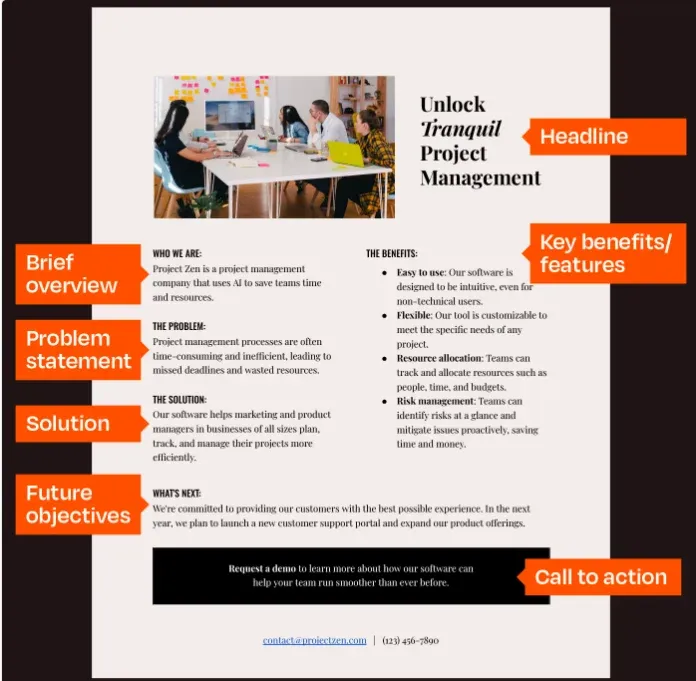
Image source: A visual depicting how to create a one-pager for your product idea
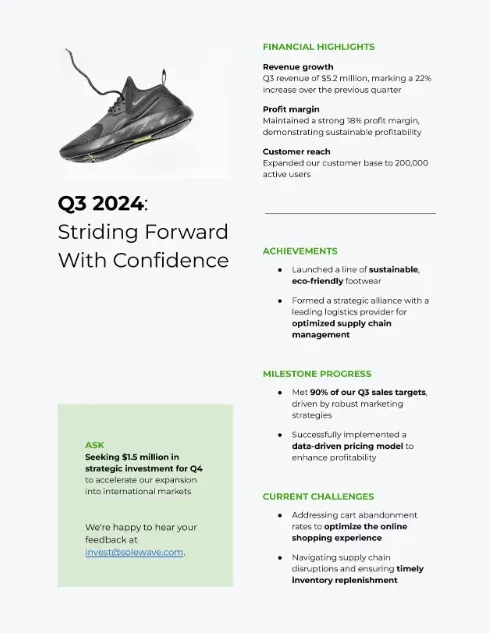
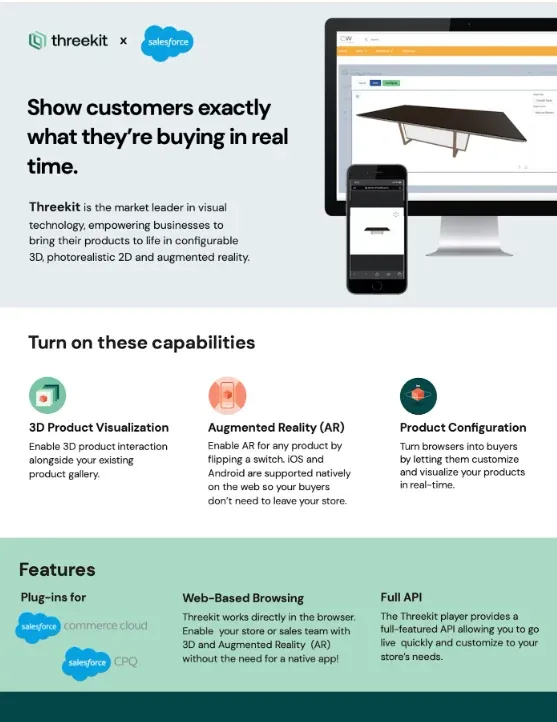
Image source: some illustration of a one-pager for a product idea
8. Shadow Testing
Category: Demand Validation
What it is:
You place a feature on your website or app, like a “Sign up” or “Coming Soon” button, but the feature isn’t built yet. It’s just there to see how many people actually click on it. This helps you measure real interest.
Why it works:
Instead of relying on opinions or surveys, you watch what users actually do. If lots of people click, it’s a good sign they want it. If not, maybe it’s not worth building.
When to use:
Before building something new, when you want early proof that people care, without spending weeks on development.
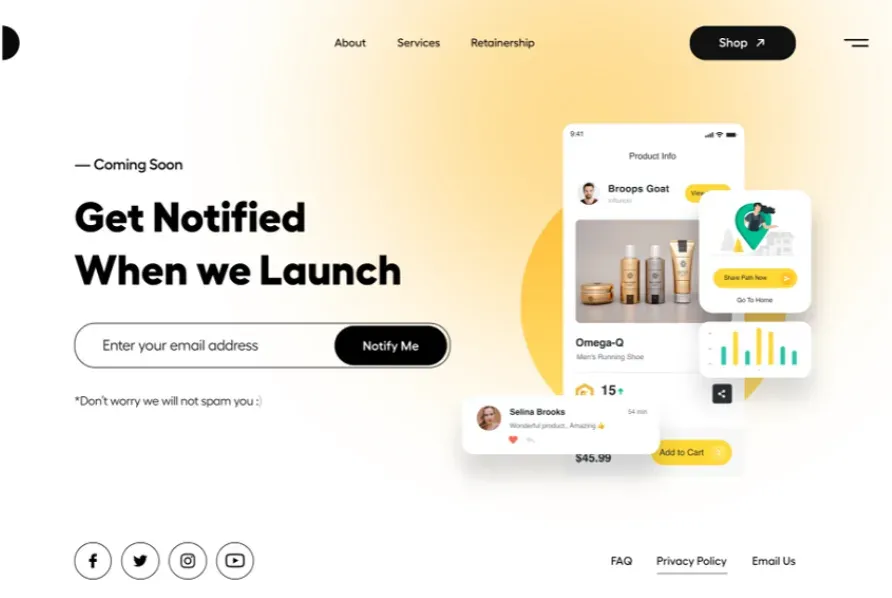
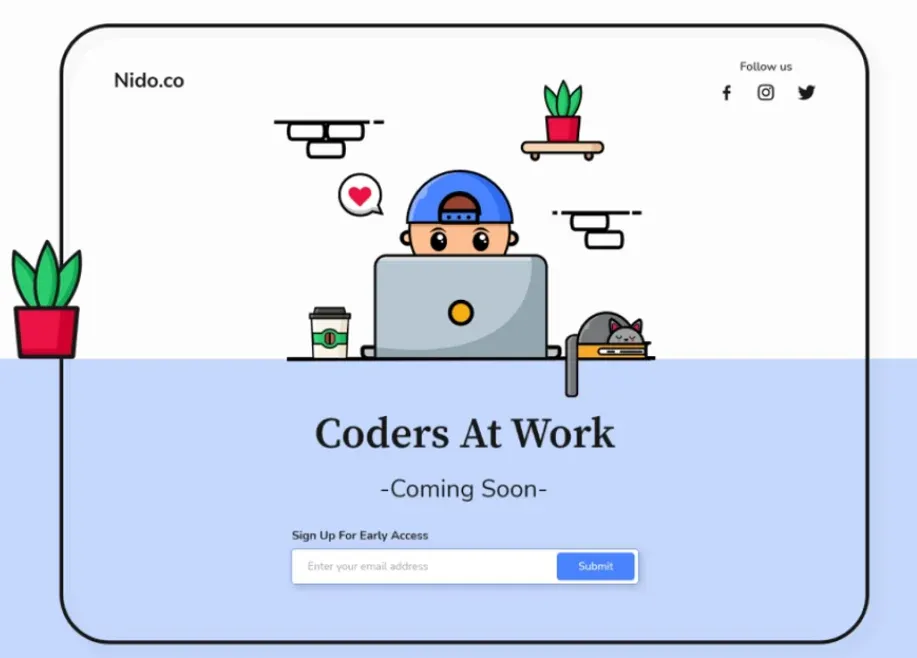
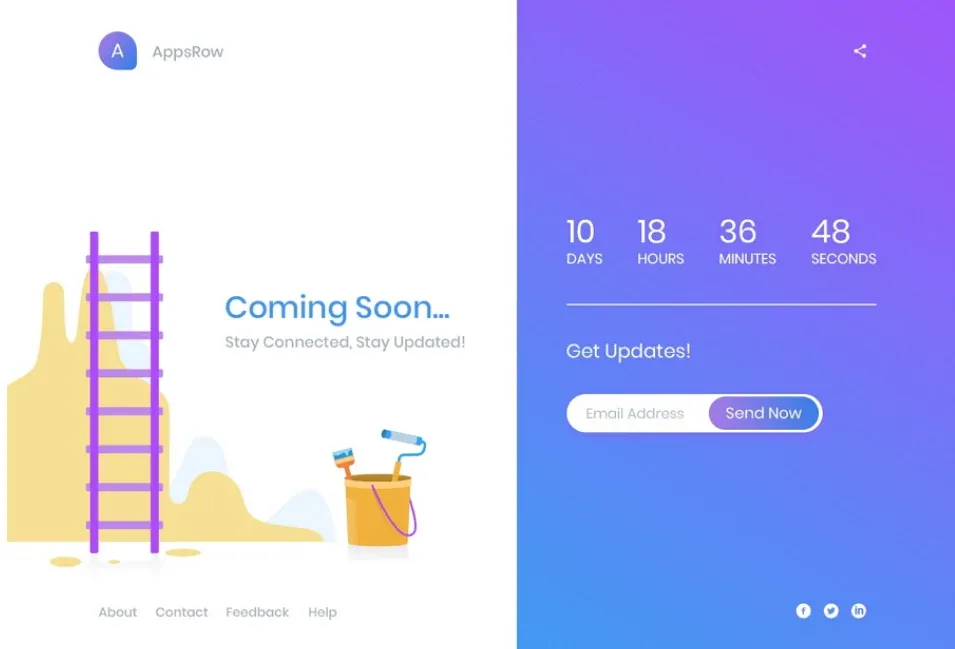
Visuals showing a “Coming Soon” or “Notify Me” button inside a real product UI
9. Time-Boxed Beta
Category: Testing Strategy
What it is:
You invite a small group of users, often loyal customers or early adopters, to try a new version of your product for a short time (usually 2–4 weeks). They use it in real-world situations and share feedback.
Why it works:
You catch bugs, confusing parts, or missing features before a full launch. Since users test it in real life, you get more useful insights than from internal testing alone.
When to use:
When your product is mostly ready, but you want to improve it before a wider release.
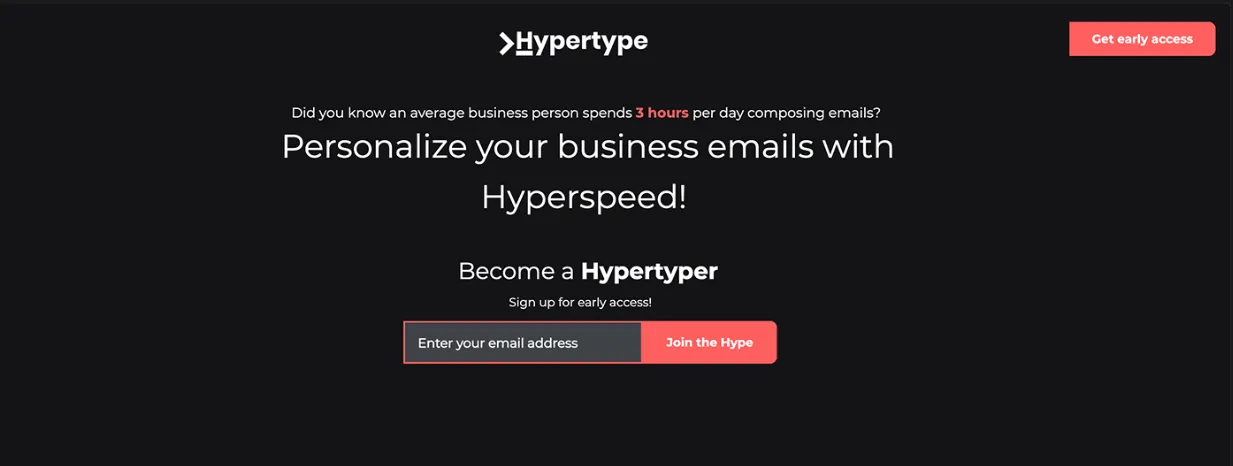
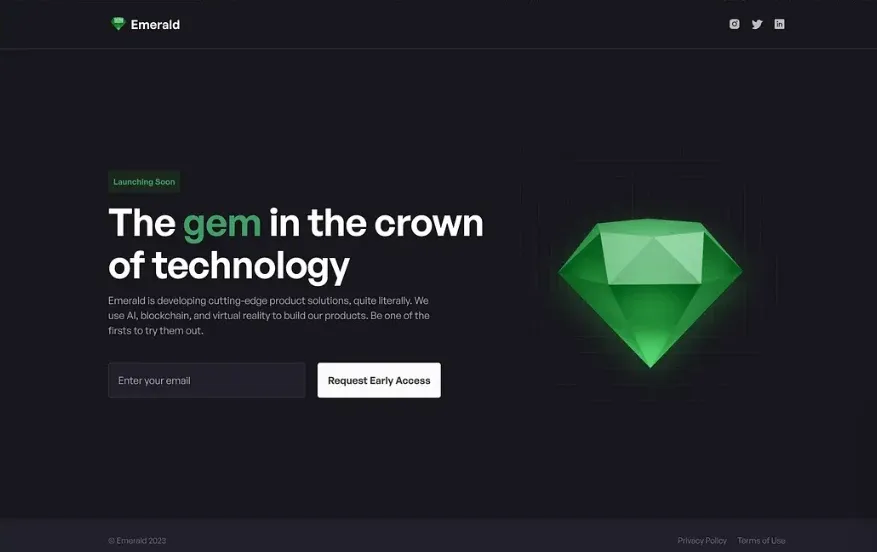
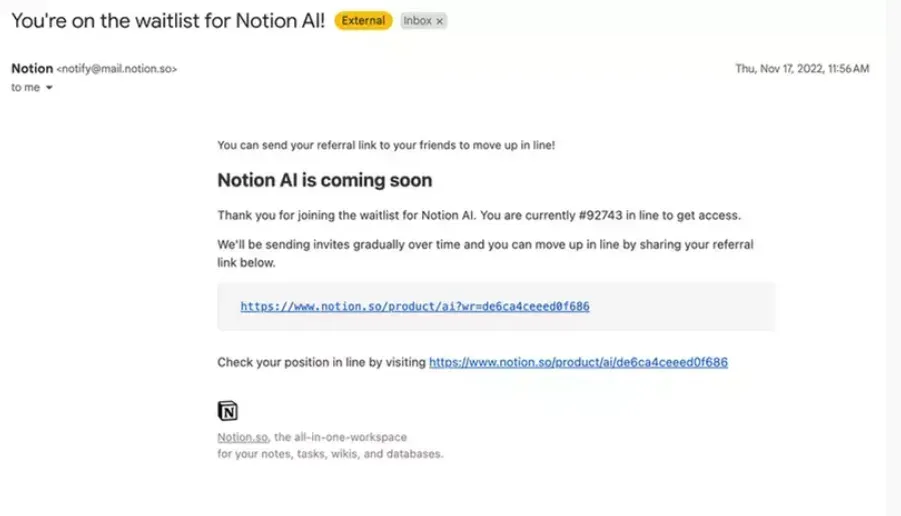
Images of an early access email or landing page
10. “What’s Missing?” Retrospectives
Category: Continuous Feedback Strategy
What it is:
Once users have tried your product, you ask them one key question: “What’s one thing missing that would make this work better for you?”
It’s a quick way to learn what’s holding them back or what they wish were there.
Why it works:
It focuses on the most important gap in the experience. You don’t waste time guessing; you hear it directly from users, in their own words.
When to use:
Shortly after onboarding, or right after they complete their first few actions in the product.
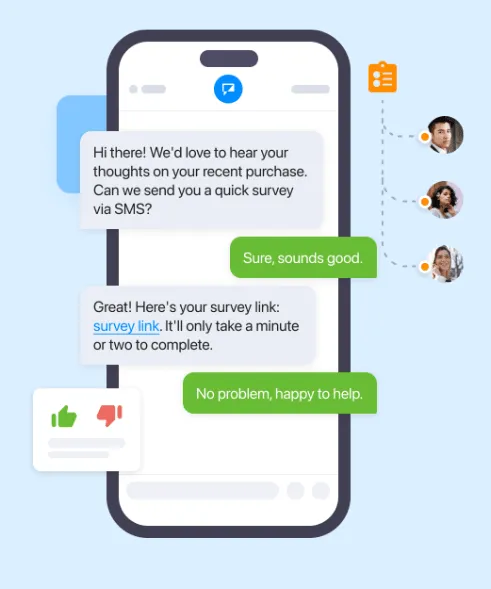
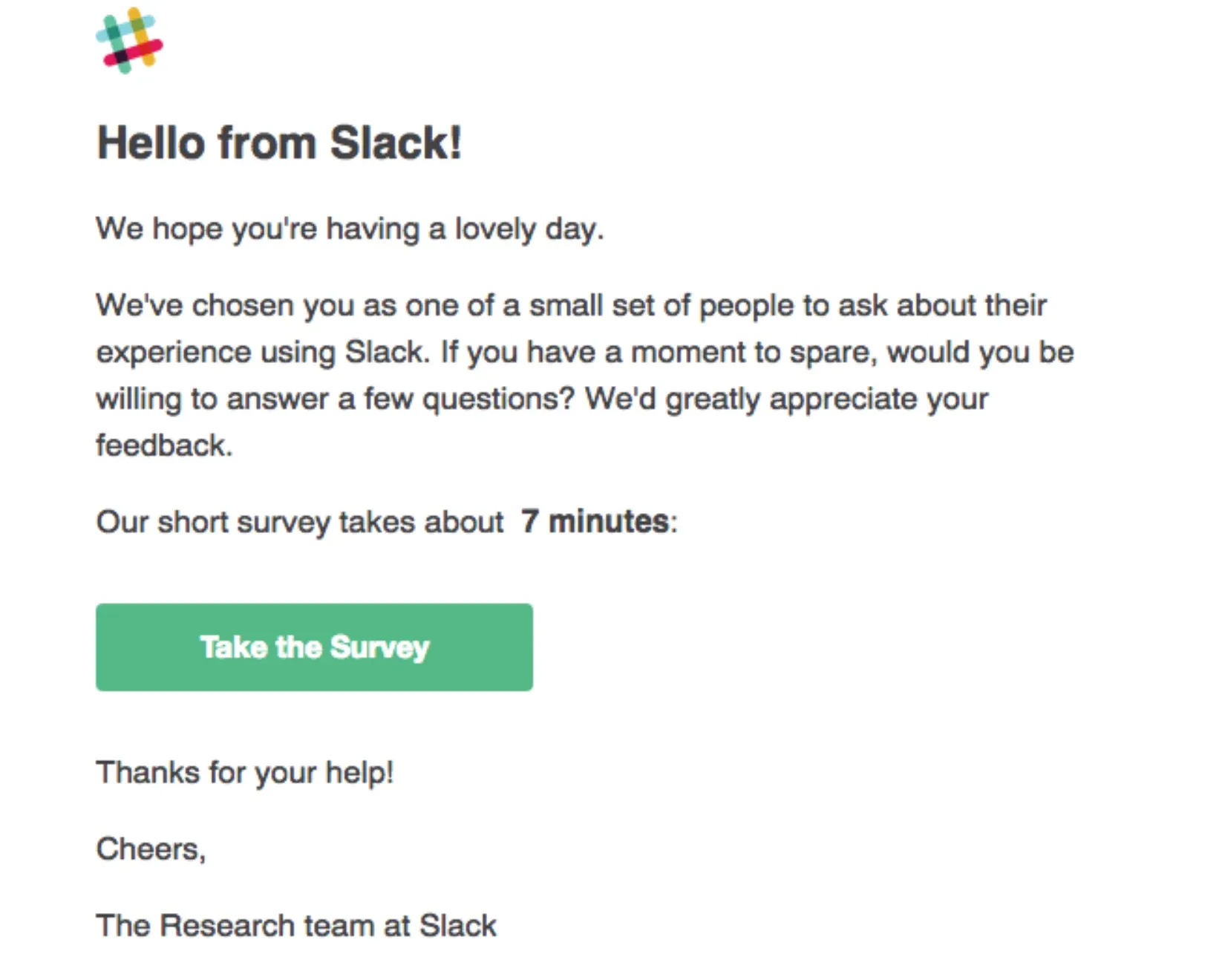
Visual representation showing getting after product launch & an email from Slack asking users for post-onboarding feedback
How Tenet Can Help You Build Better Products
We’ve helped 400+ businesses across 10+ countries design and develop products that not only launch but grow faster, with fewer do-overs. From MVPs to enterprise platforms, our approach is grounded in research, sharp design, and reliable engineering.
One thing clients often say? We don’t cut corners, even if it means three extra rounds of iteration.
Teams like AnlesKw, Applied Vastu, and Pazazz have trusted us to turn product ideas into user-ready experiences.
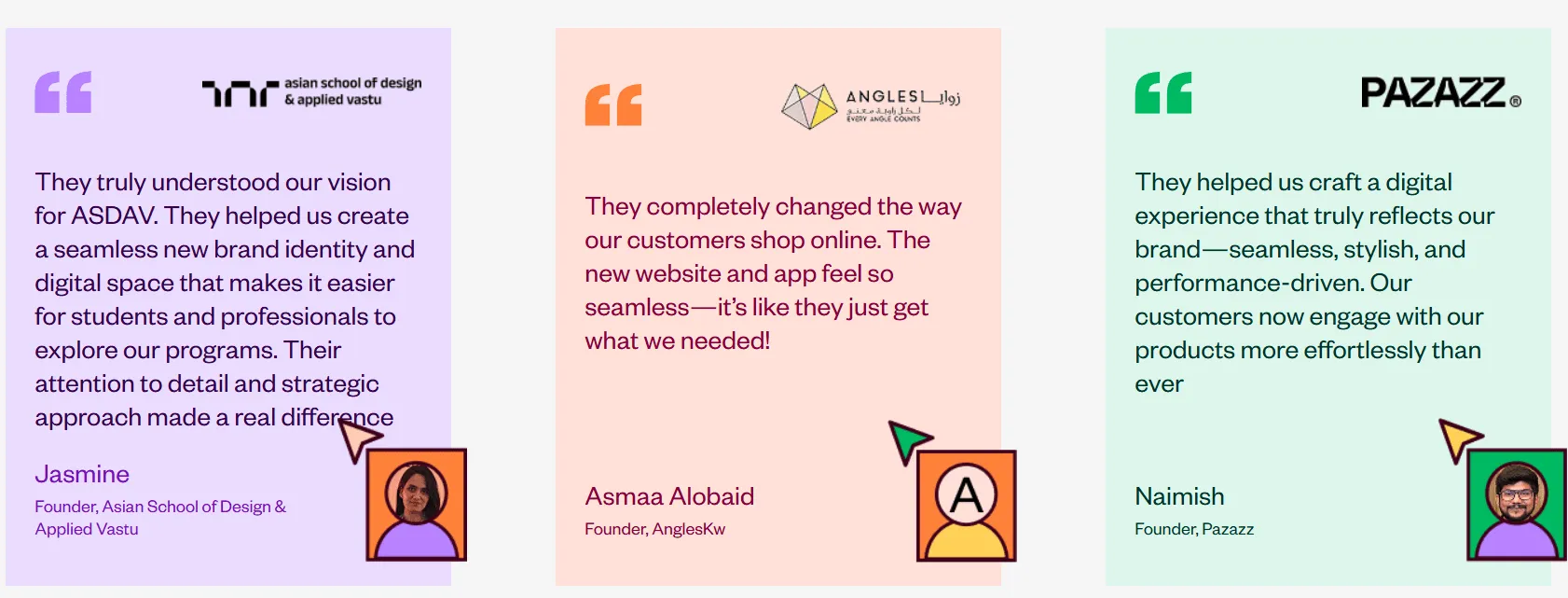
Some genuine appreciation & feedback from our clients
Curious what’s working and what’s not in your current product?
Contact us and start with a free product audit :)
Get a free product strategy consultation call with our experts.
Get a free product strategy consultation call with our experts.

Got an idea on your mind?
We’d love to hear about your brand, your visions, current challenges, even if you’re not sure what your next step is.
Let’s talk
